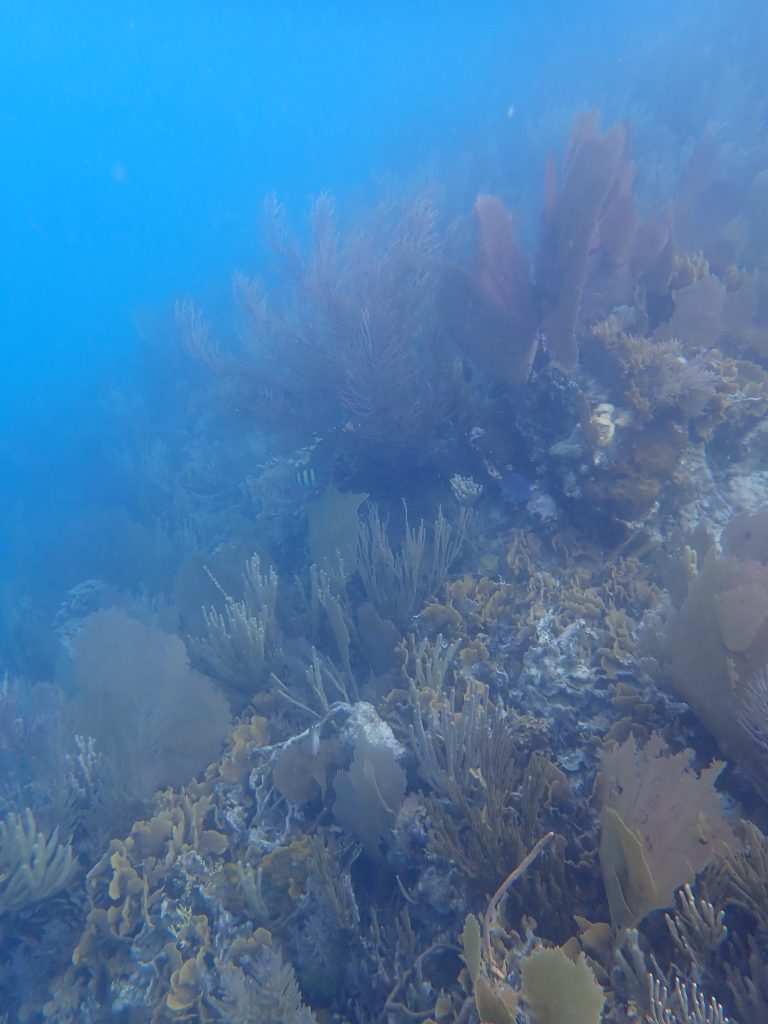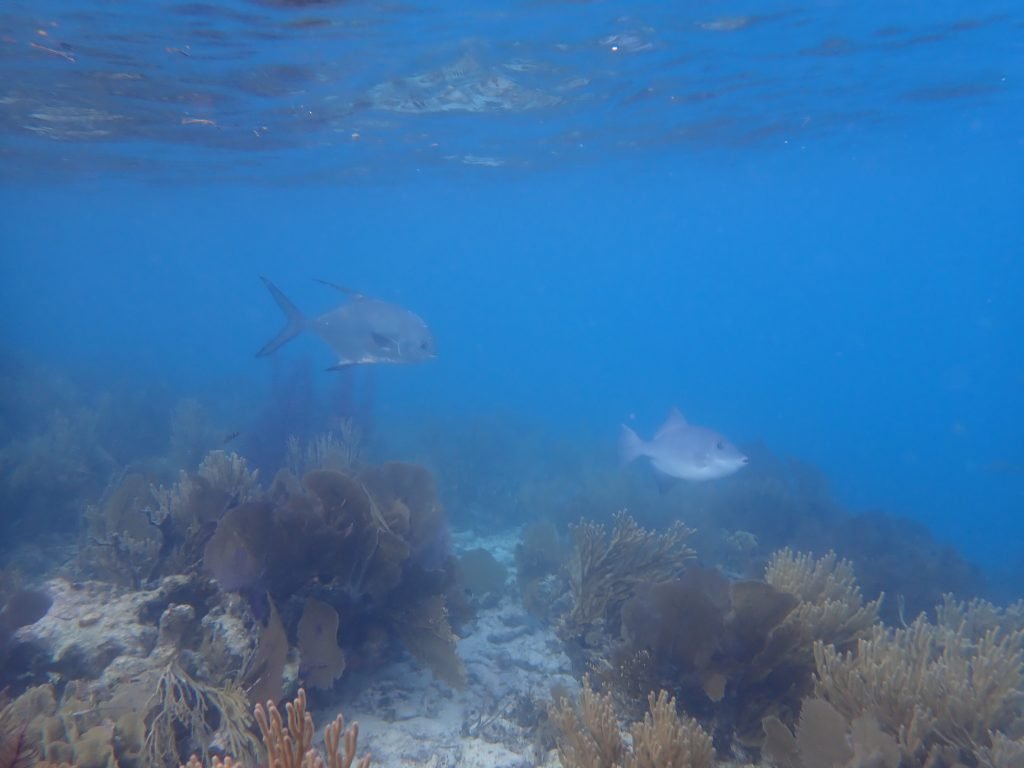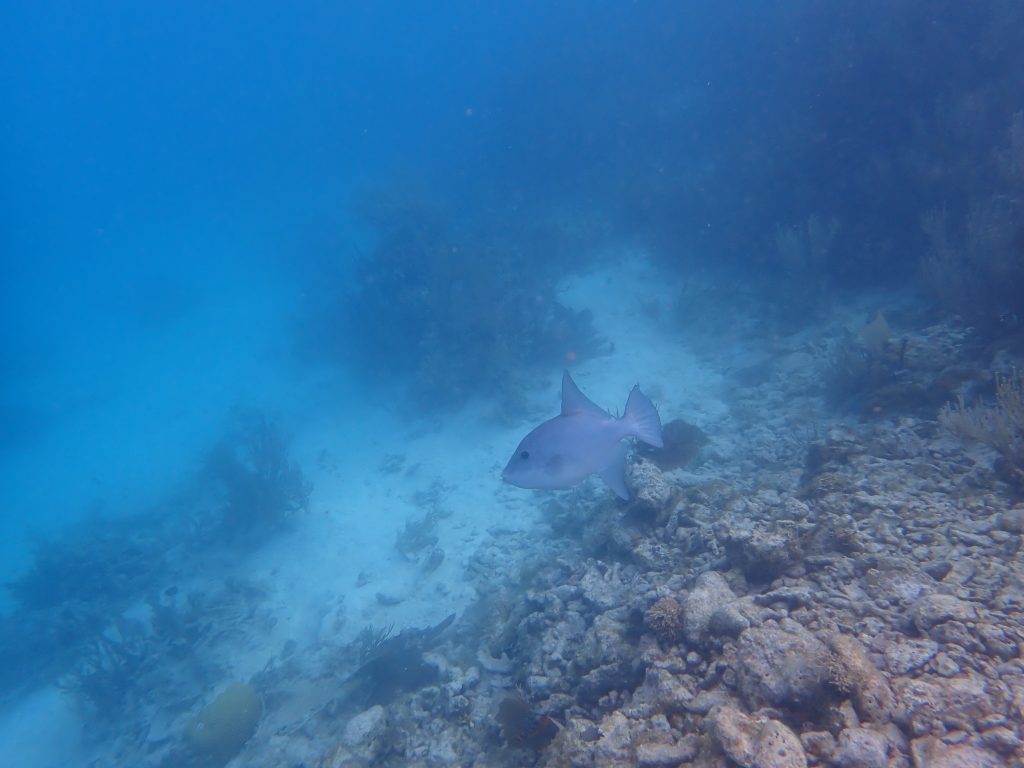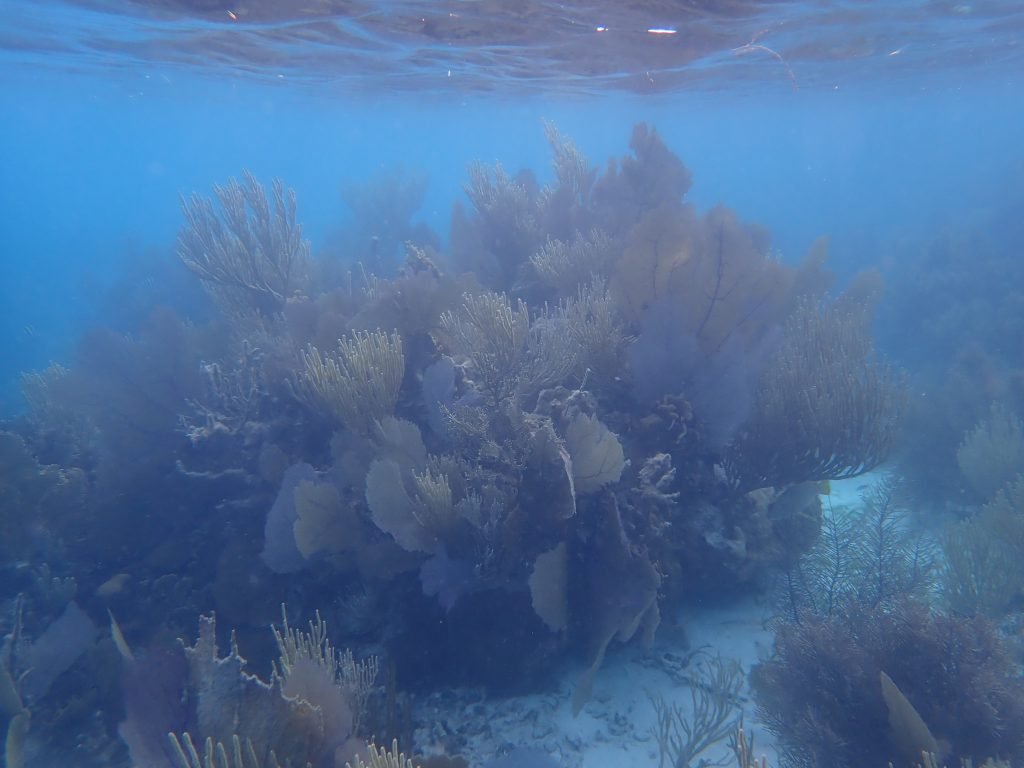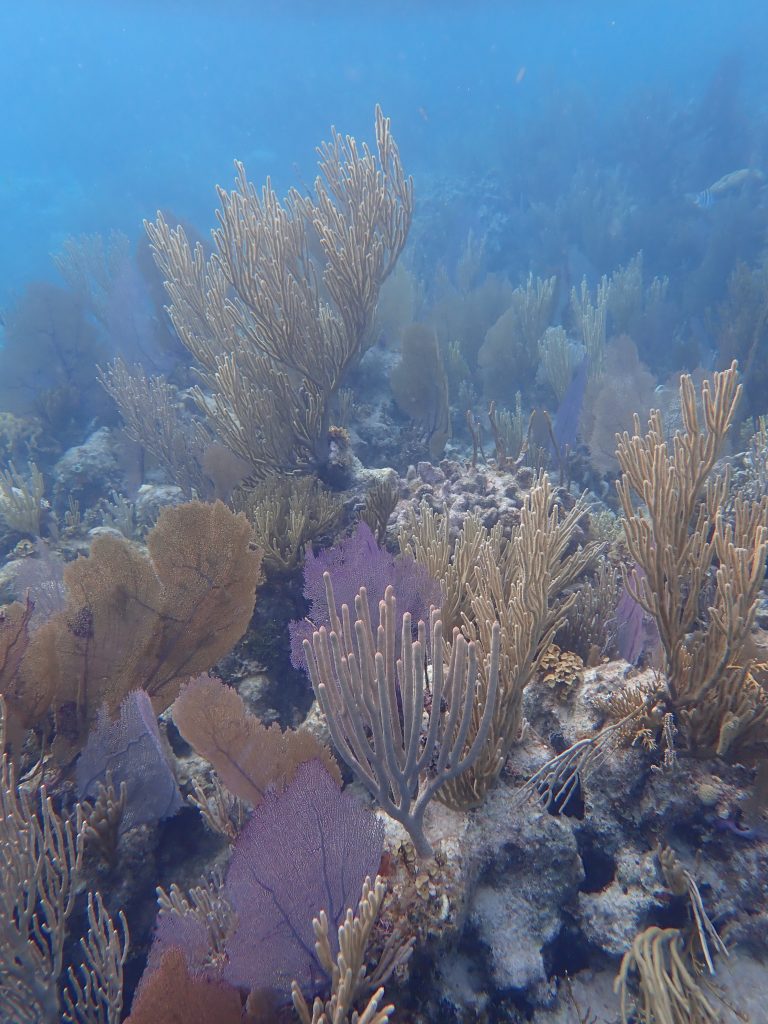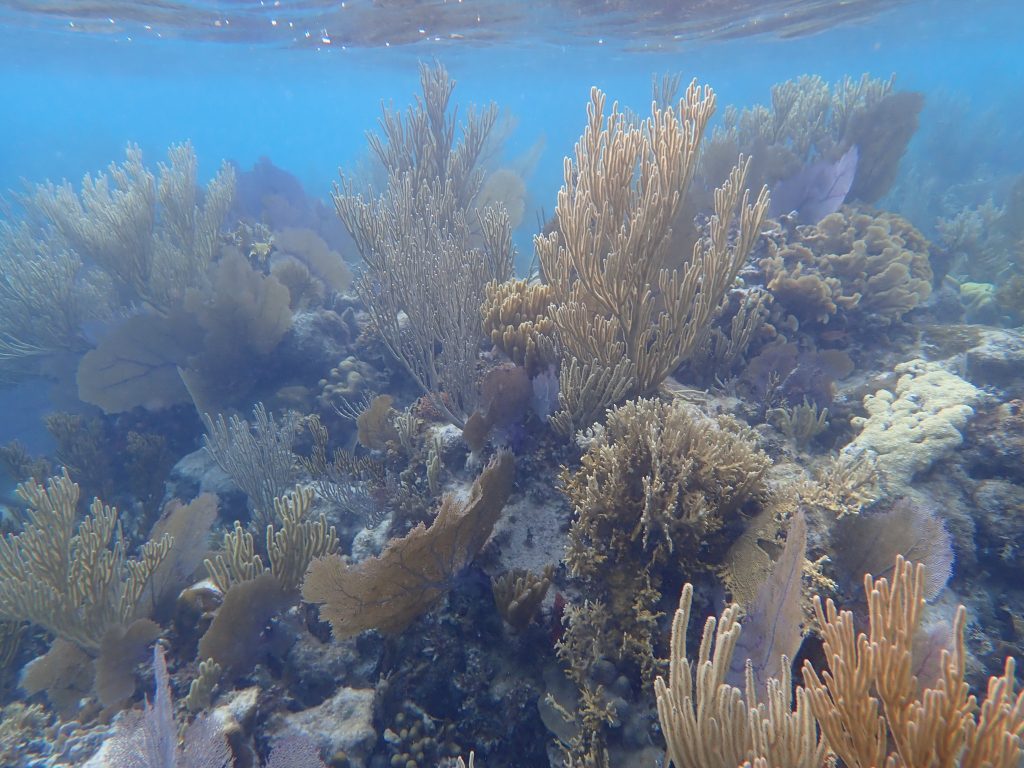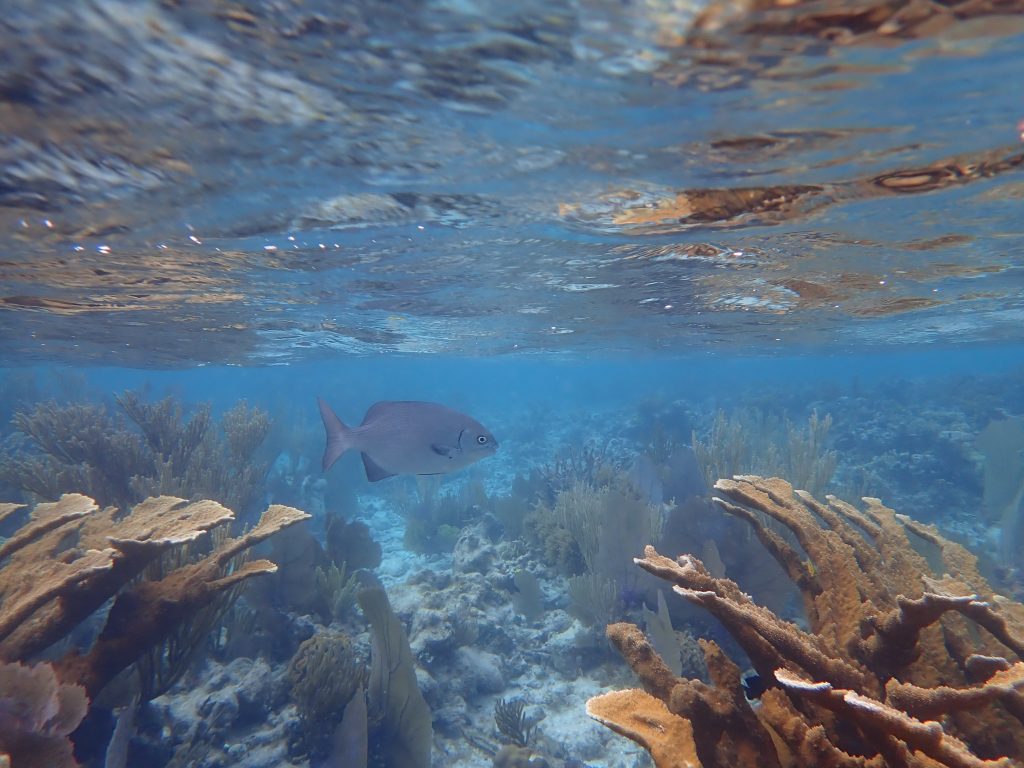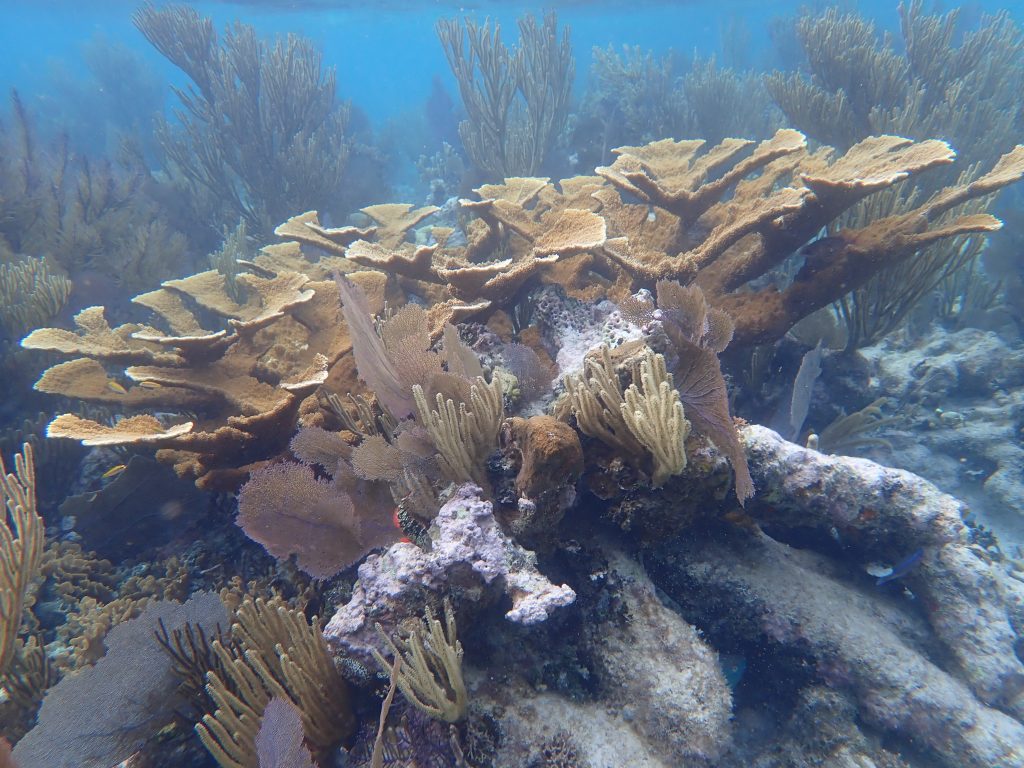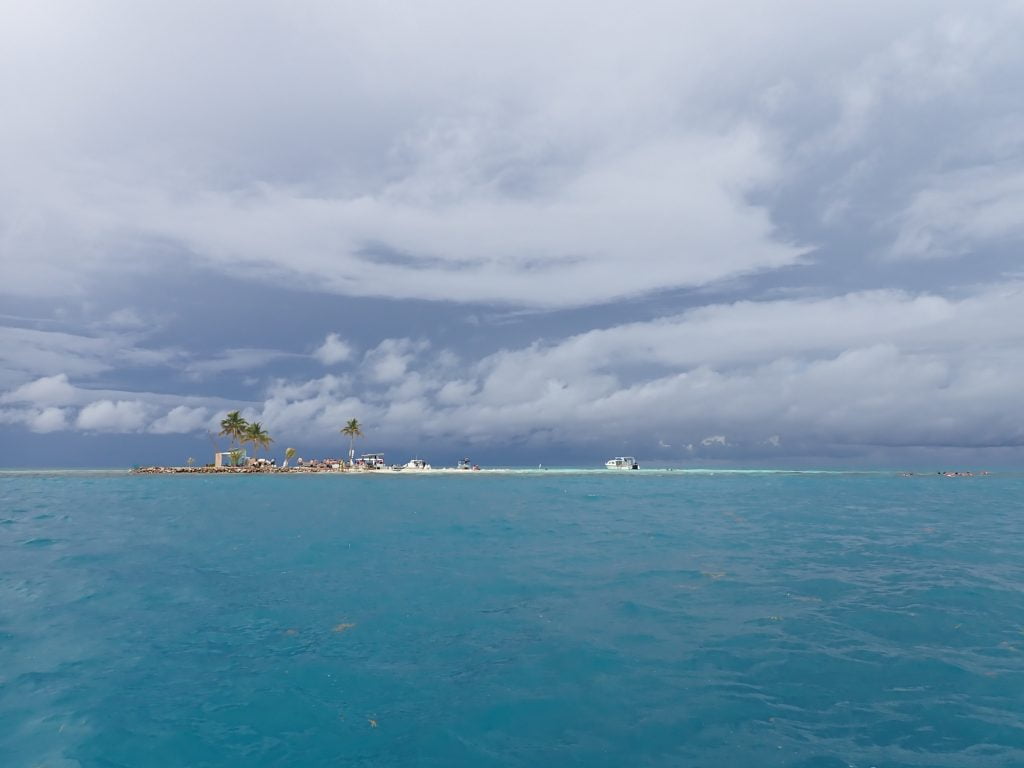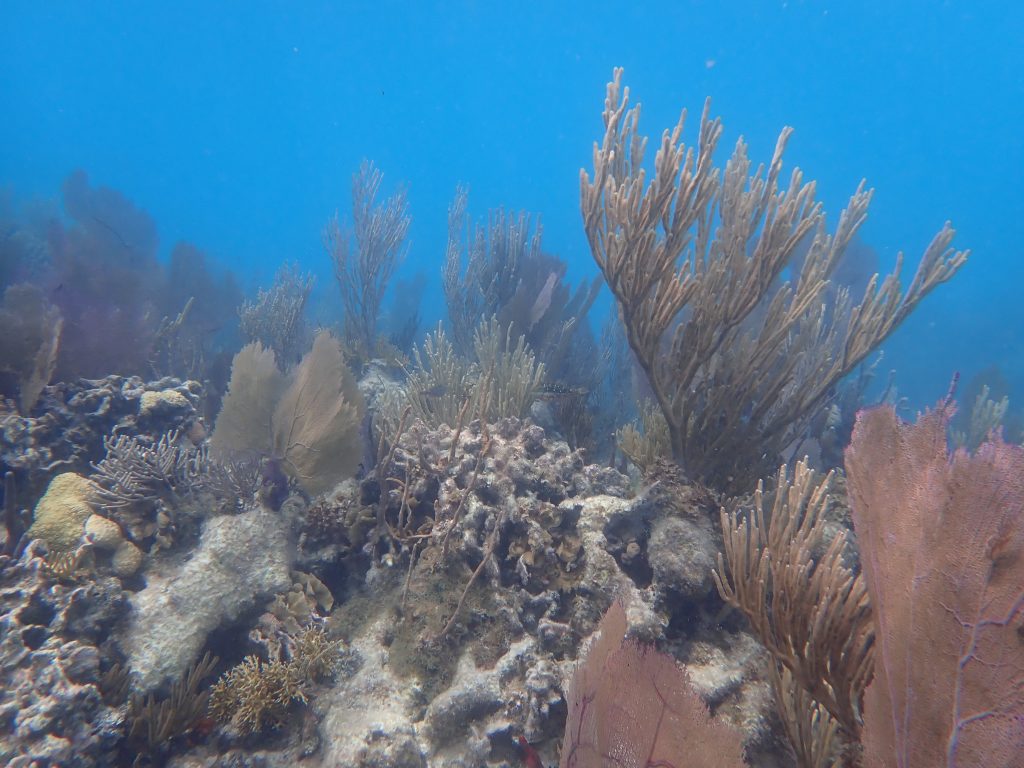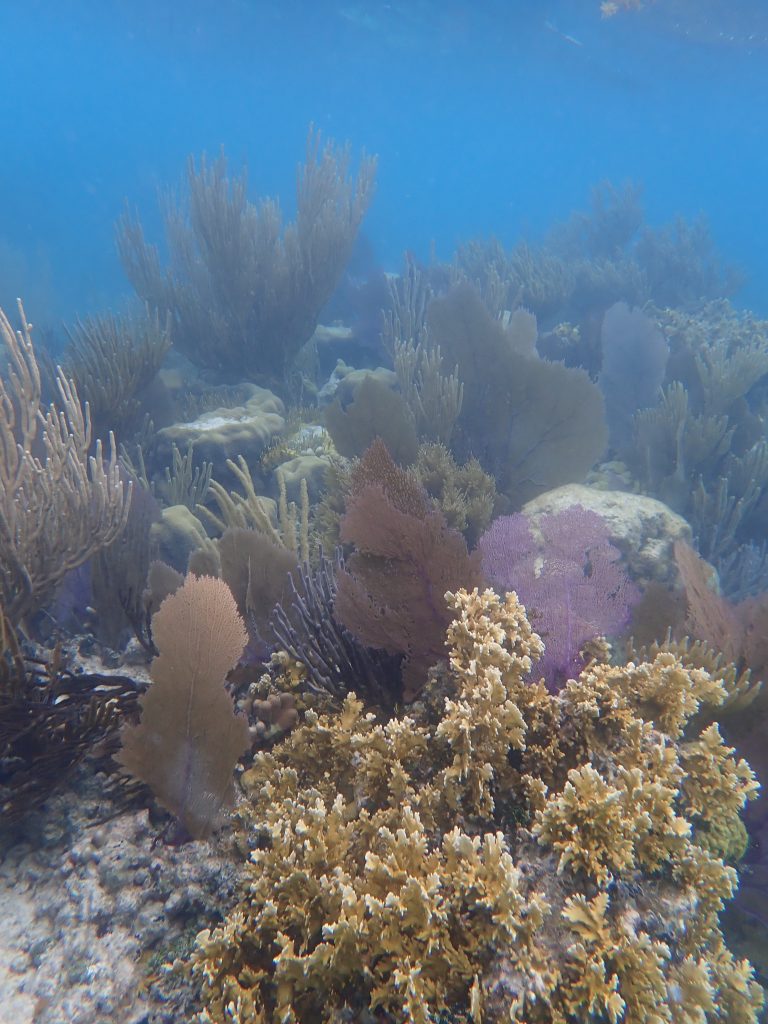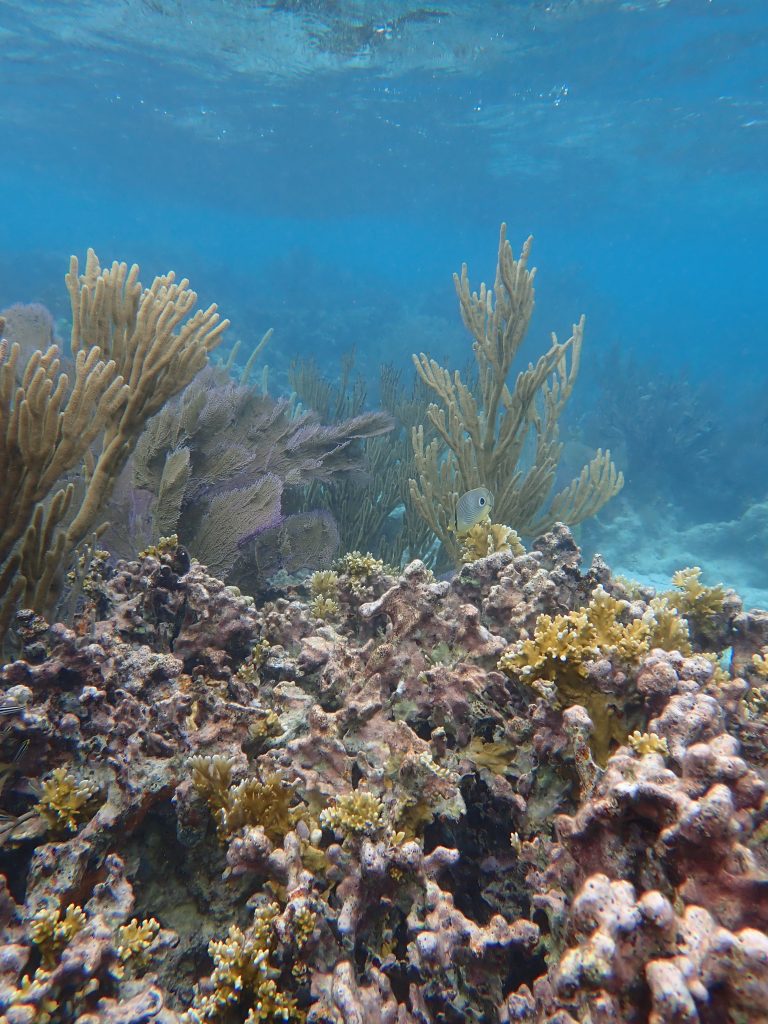16th to 19th June 2022
Entry is relatively easy – both the cruising guide and navionics give you a reasonable idea, but you can eyeball it here if you go slow and have someone watching the water from the bow; the clarity of the water and distinction between the different colors/depths is the clearest we’ve experienced so far. Dark blue – deep. Light blue – less deep, but fine. White – shallow sand, go slow so your bow person can tell you how shallow and watch for coral/rocks. Brown – VERY shallow, stay away. Green – sea grass or coral or a mix, depth varies with shade, go slow and let your bow person tell you what to do.
We anchored off a small mound of sand, in about 8m depth. I thought we’d be a little too close to shore if the wind was to swing around to the West and heavy enough to stretch the chain out, we discussed putting out a second anchor. But after dinghying into shore, we think we’d be OK as the depth stays over our draught most of the way to the dry patch. Plus, there was nothing remotely West-ish in the forecast for the next few days…

Fees were collected promptly, $25BZ per adult (including a 5BZ ‘service charge’, which we actually got a receipt for). Payable daily, whenever the guys are there to collect it.
After lunch, Arthur and Theo paddleboarded over to the island with a shovel while Hector, Charlotte and I took the dinghy in the opposite direction. Charlotte went snorkeling on a drying reef in the direction of the Southern island – which was spectacular. And we dinghied around the southern island to have a quick look at another couple of areas which would probably be beautiful for snorkeling too.
There were still two children on the central island when we popped over to say hello, and they’d had a wonderful time digging a very large hole with attached tunnel system. Play ensued, until Hector cut his knee (on what? we have no idea) deeply enough to need carrying back to the dinghy and boat. Thankfully, we’re well equipped for such injuries and he knows the wound-irrigation and steri-strip routine now. Arthur and Theo were still on the island. Charlotte went to pick them up shortly before dinner.
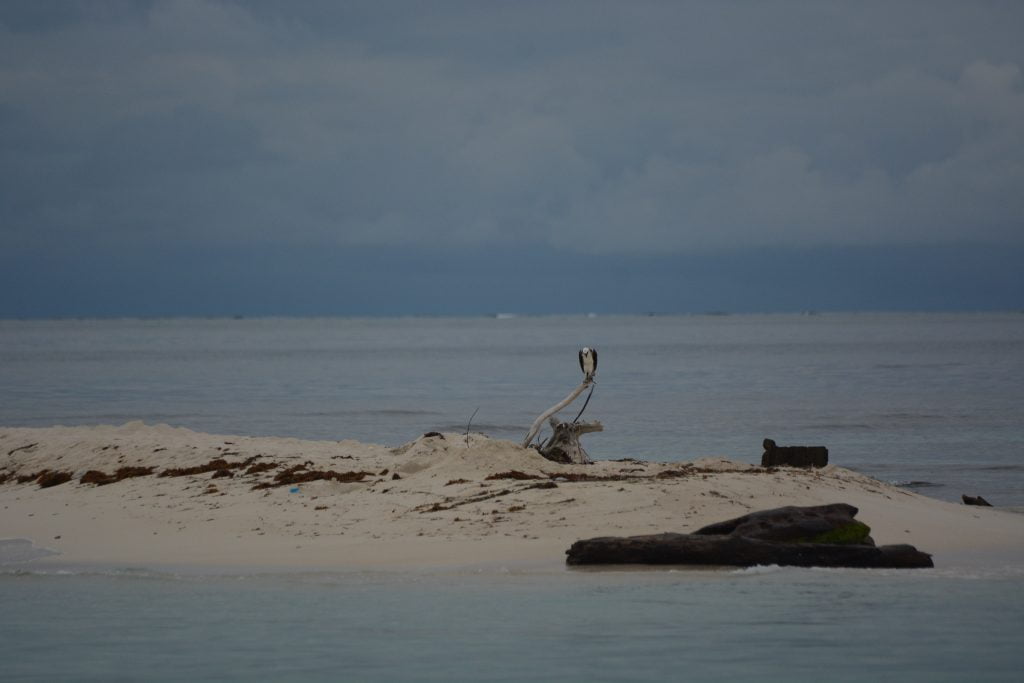

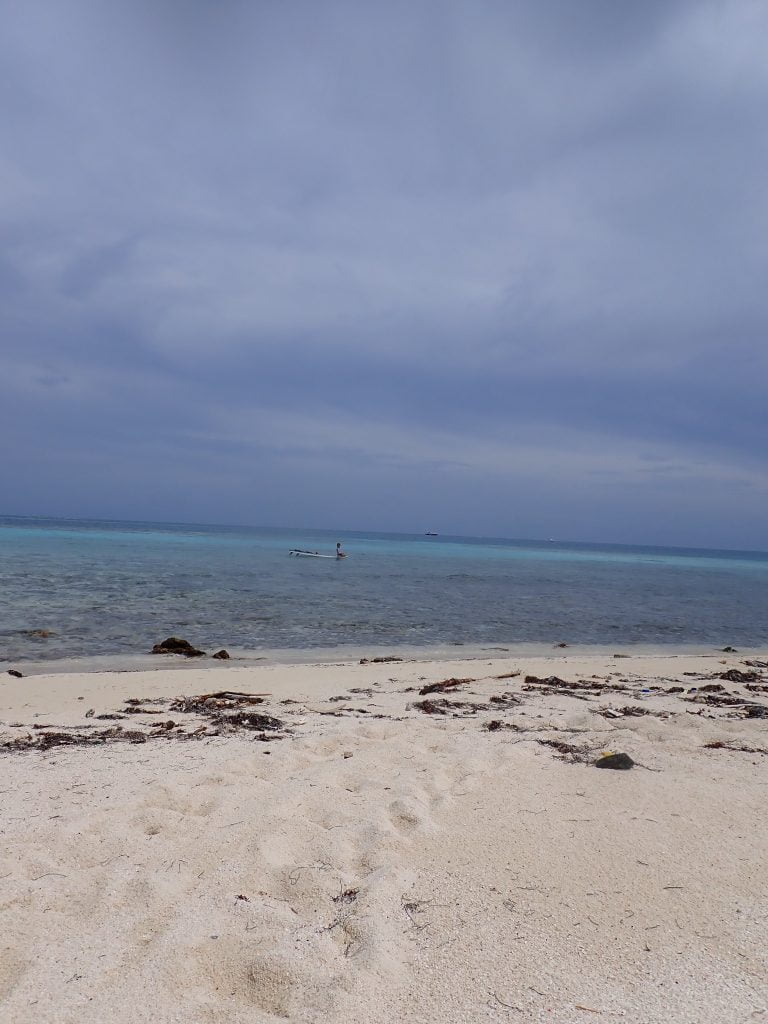
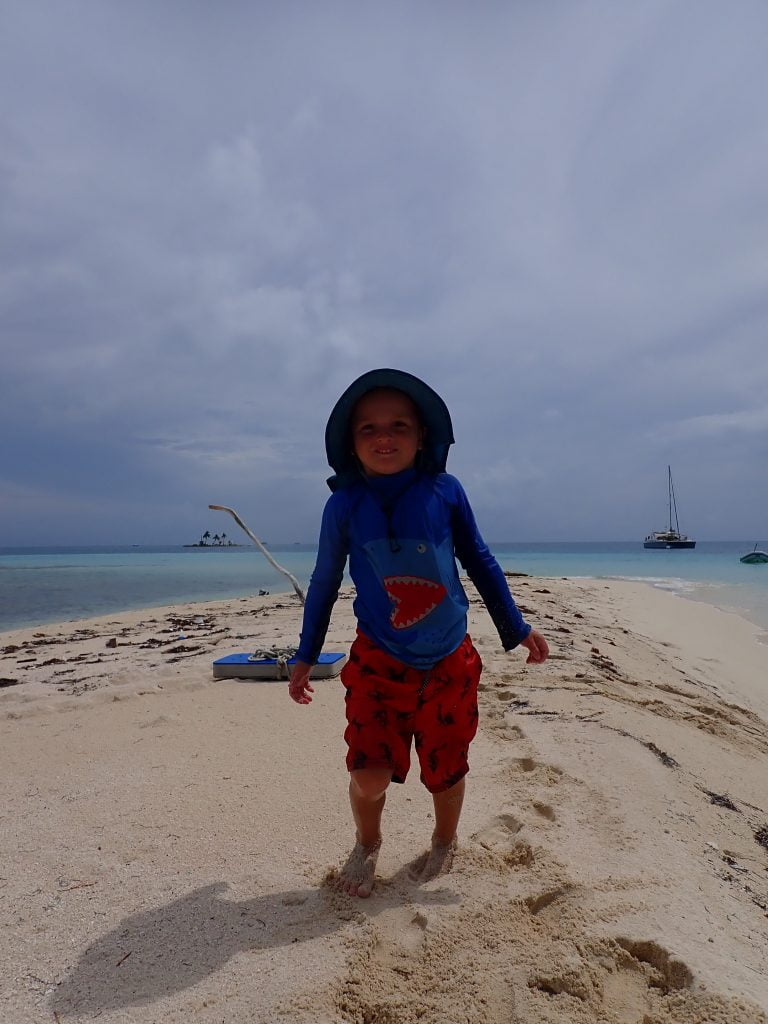
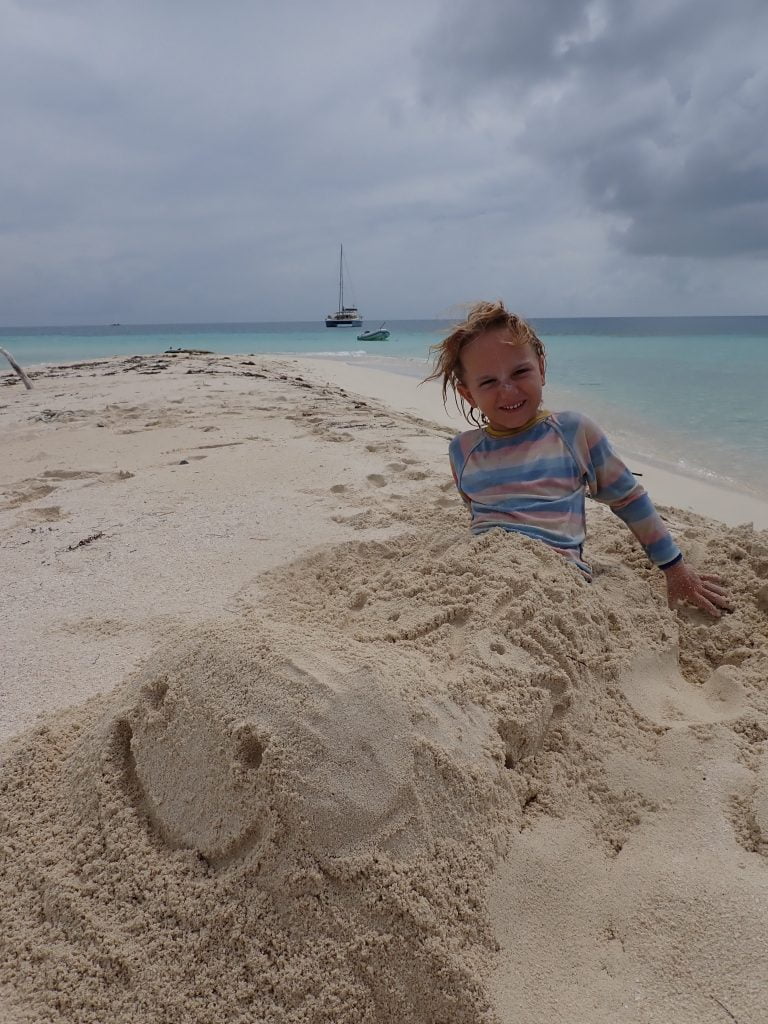
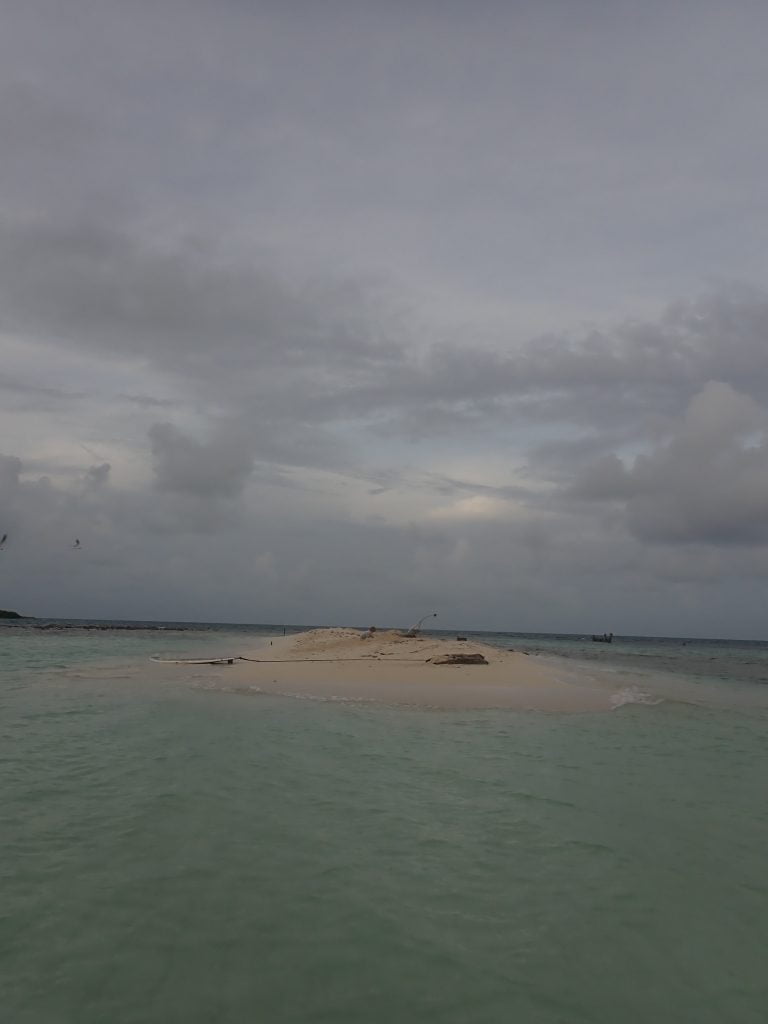
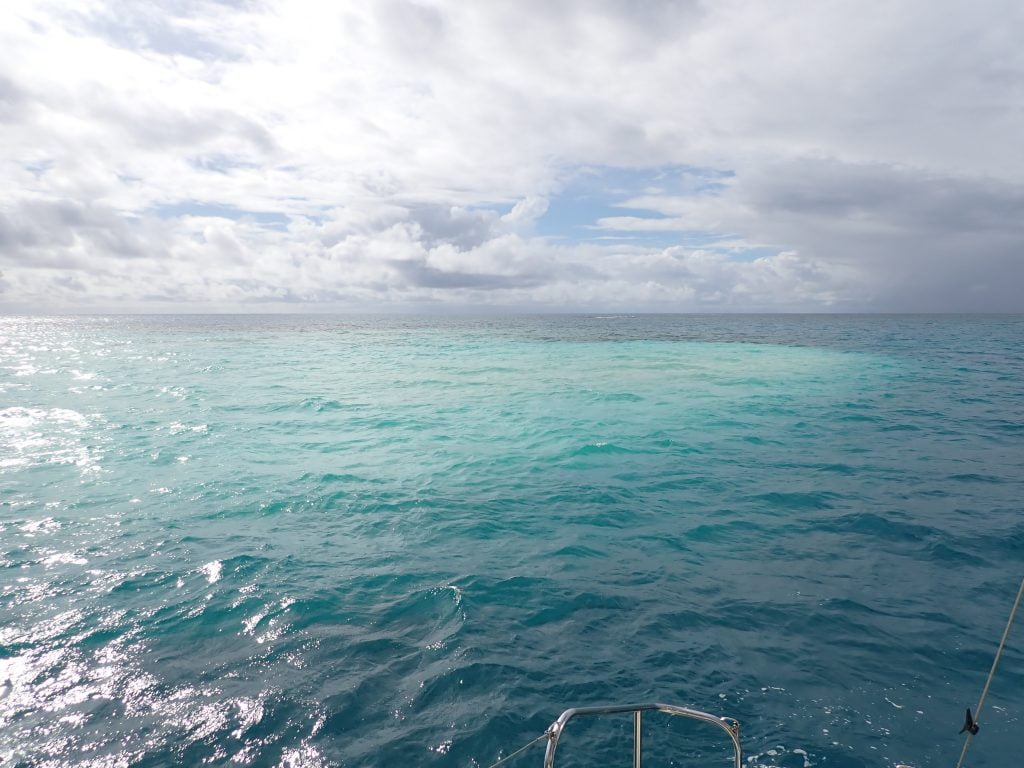
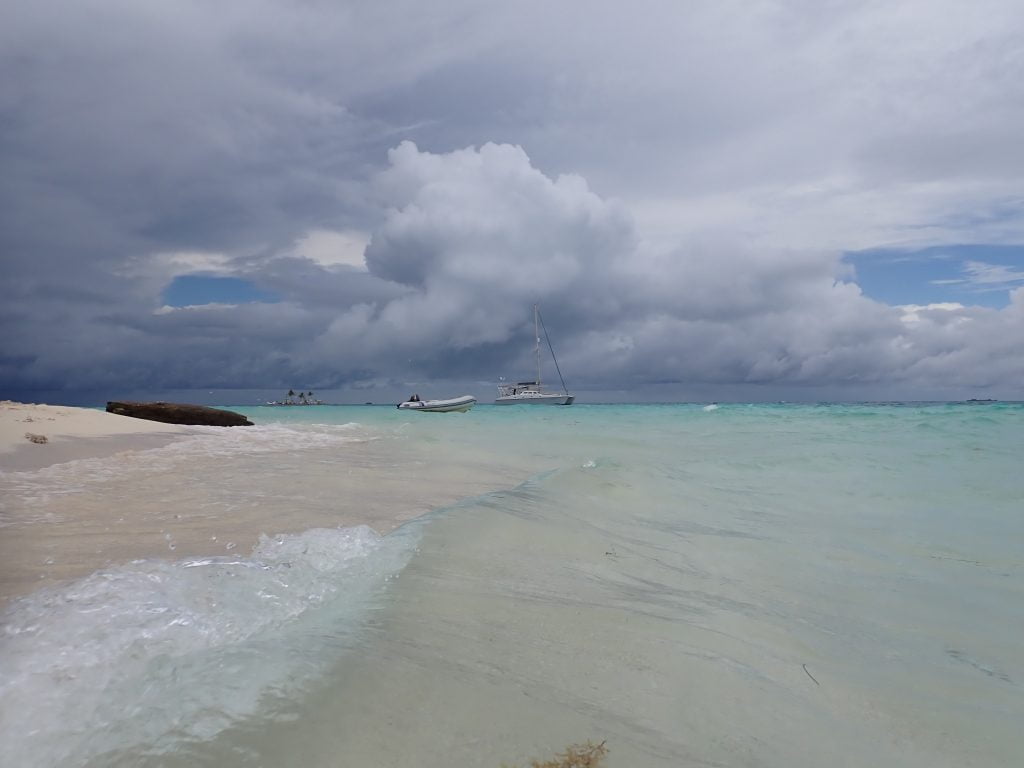
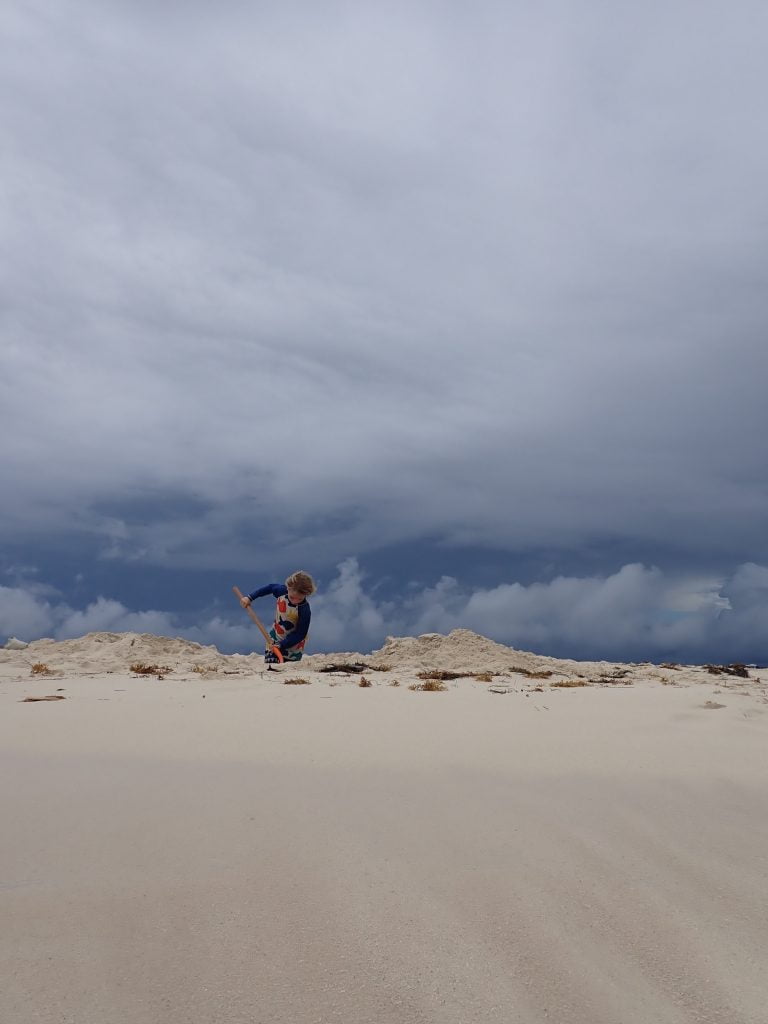
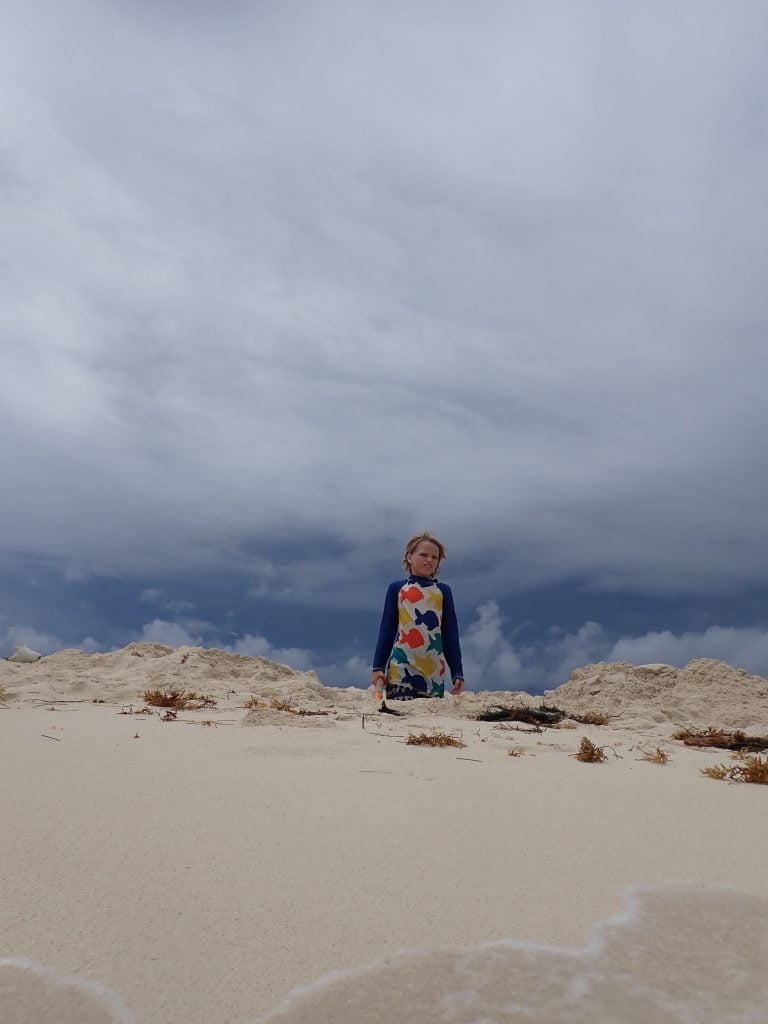

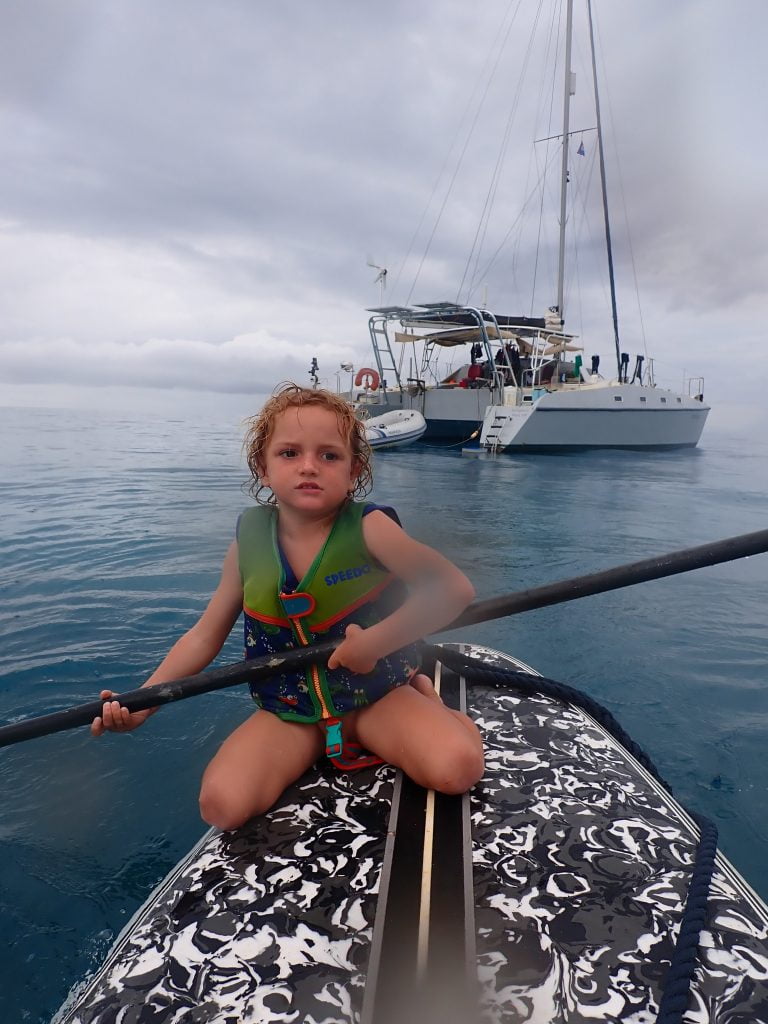
3am the next morning, it turned out the forecasts had been wrong. We were safe, probably, with the beautiful coral island close behind us, glowing white in the moonlight. But “probably safe” isn’t conducive to a good night’s sleep. So, I got the second anchor ready, Charlotte fed out the rope, and I took the dinghy out to drop anchor as far from the island as possible (after towing the boat 20m or so). Then we slept better. New rule: if you think about putting out a second anchor, just do it. Like reefing (reducing sail).
Note on the anchorage: There’s some shelter from easterly winds; a tiny amount from south or north; nothing at all once the winds have any west in them. Winds were light while we were there (peaking at 17kts for an hour or so as a squall brought westerly winds…); I wouldn’t overnight with any of the forecasts showing 20+ from any direction other than due East.
The next couple of days were spent hopping between the two cays, only visiting the southern one early in the morning or in the afternoon to avoid the tourist-rush. And enjoying the lighting which seemed to be all around us every morning, except for the one strike where the sound and light were a little too close together for comfort (all electronics were safely stowed at this point, but still not fun, especially out here).

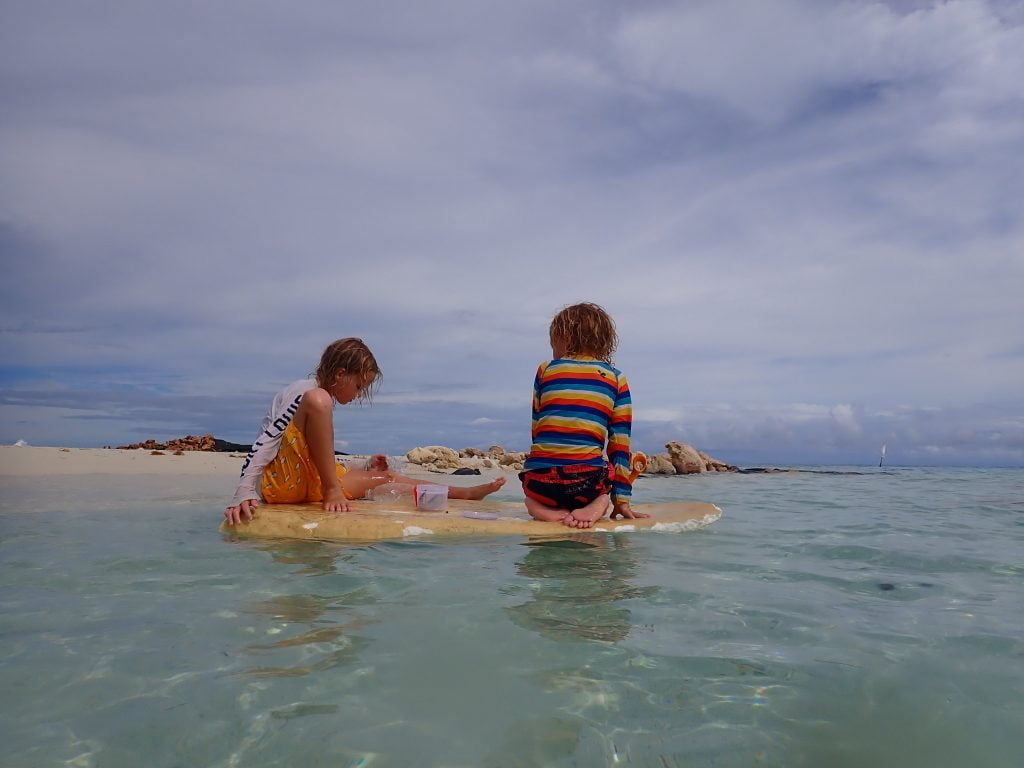
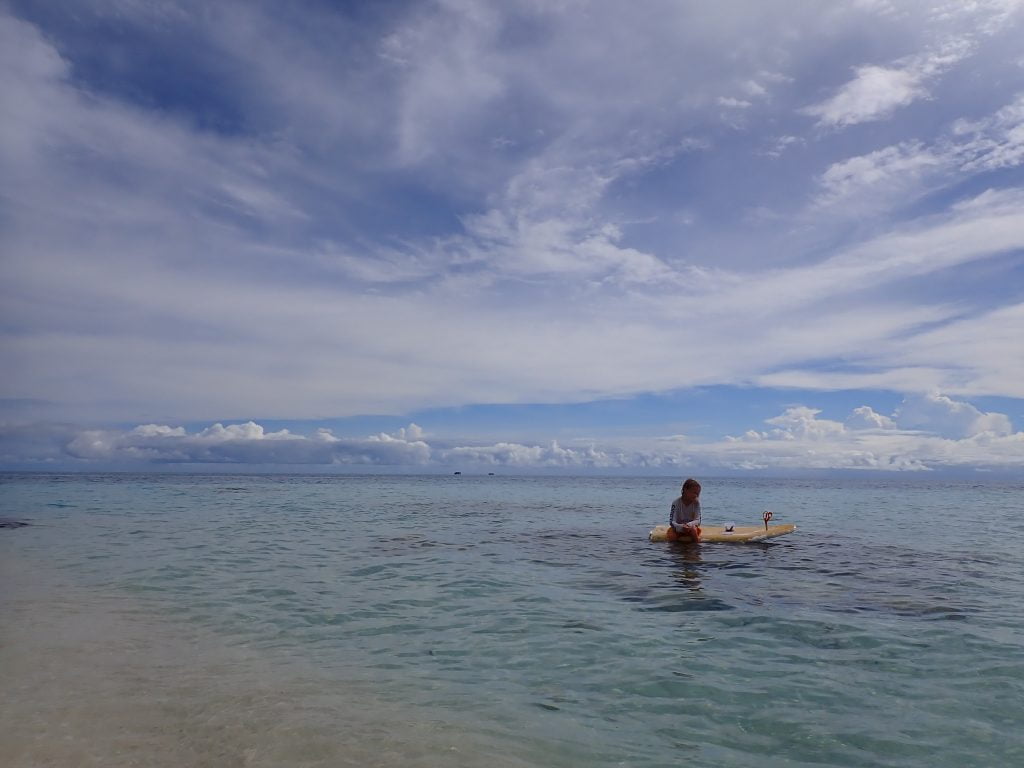
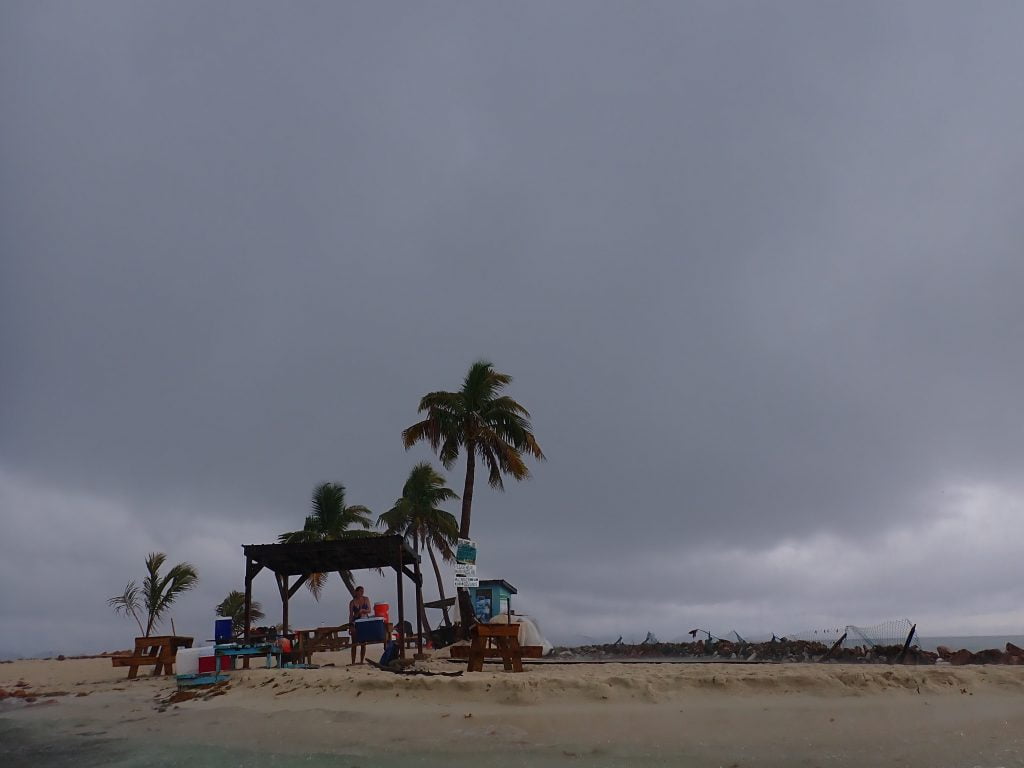
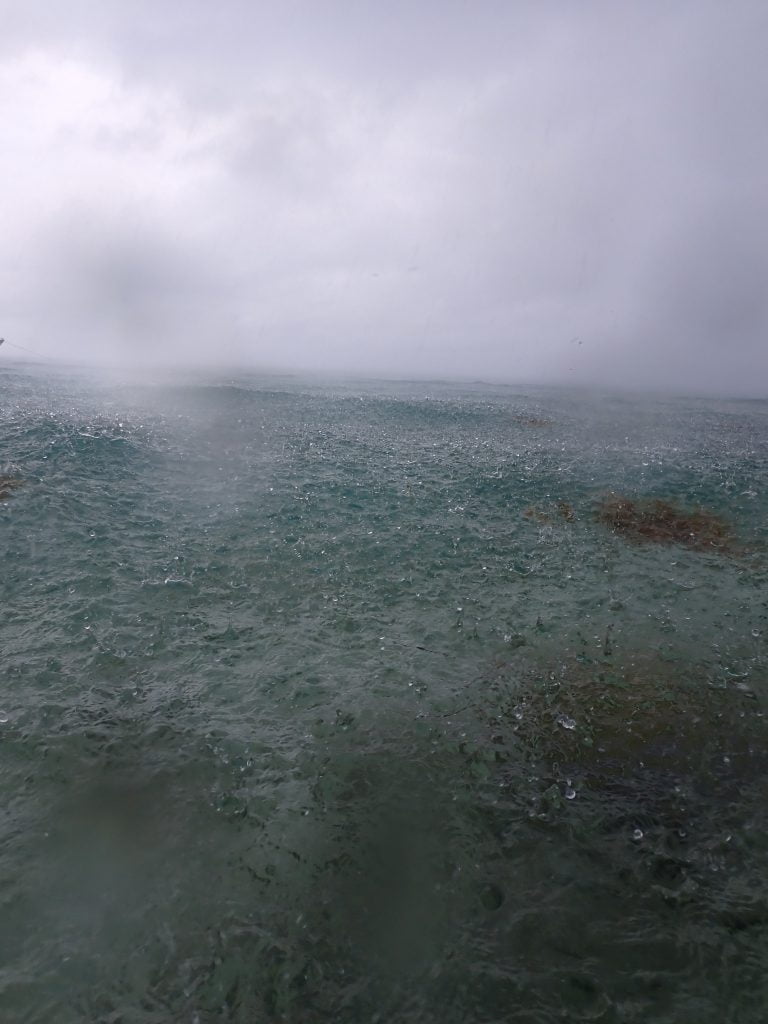
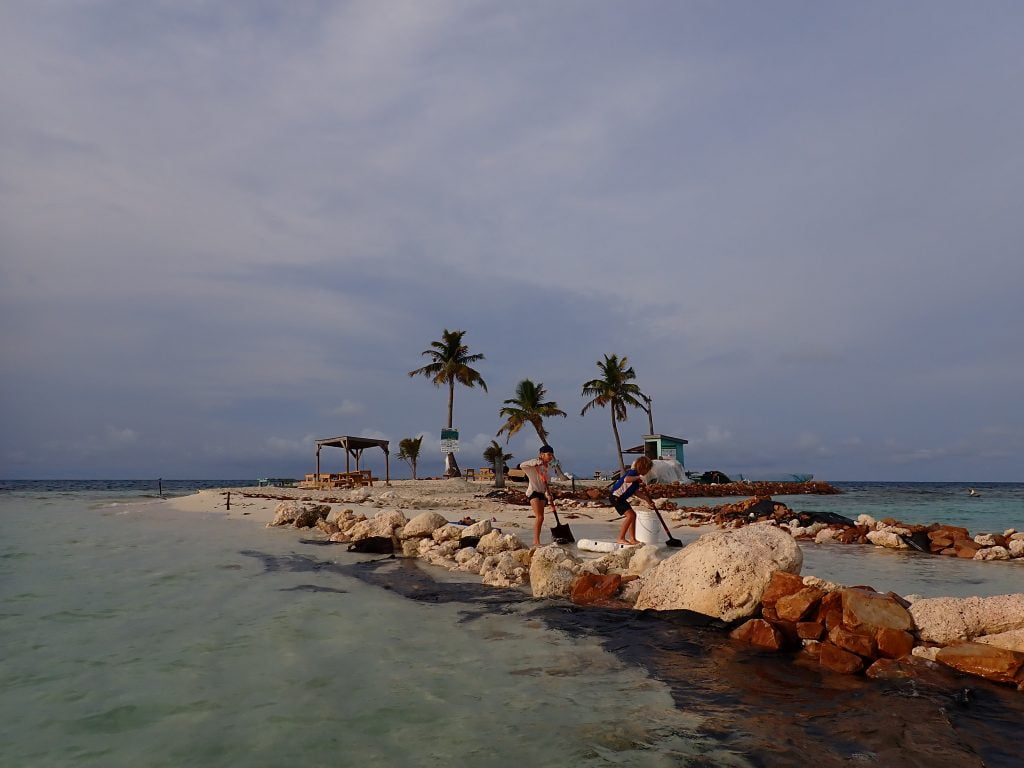
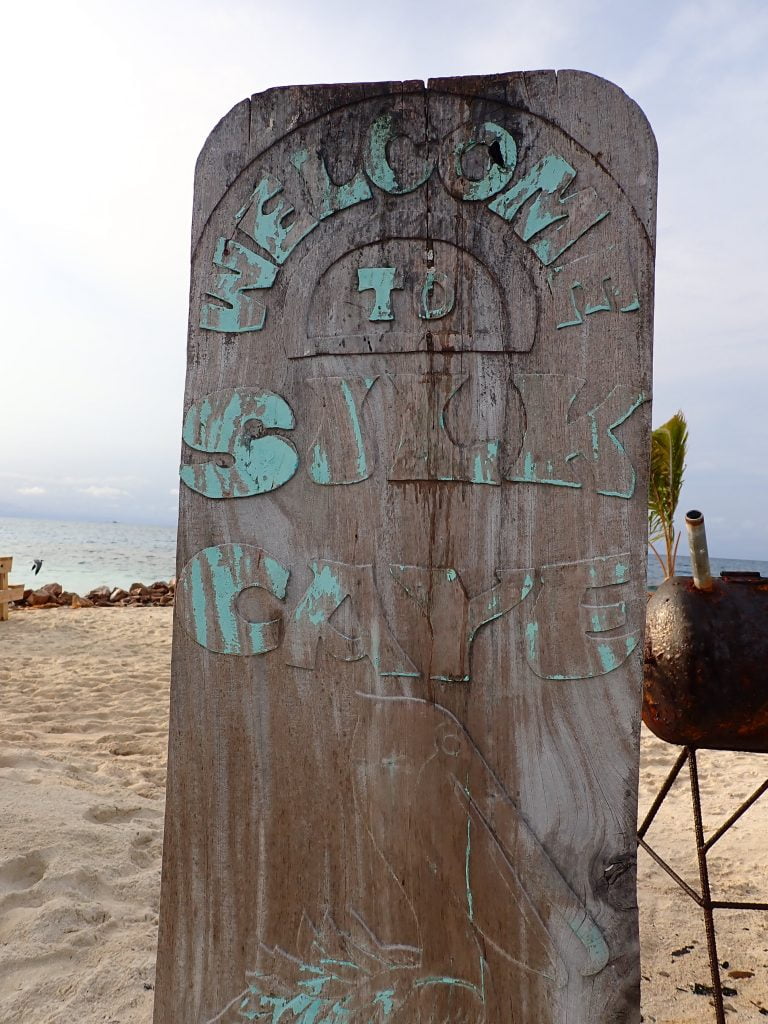
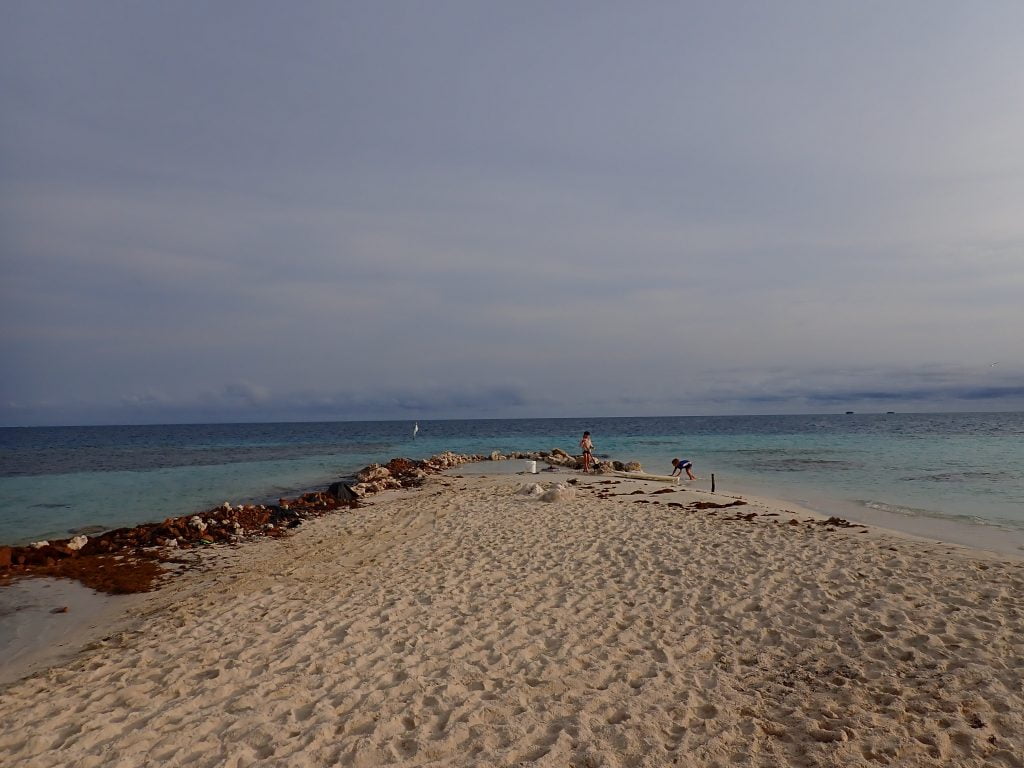


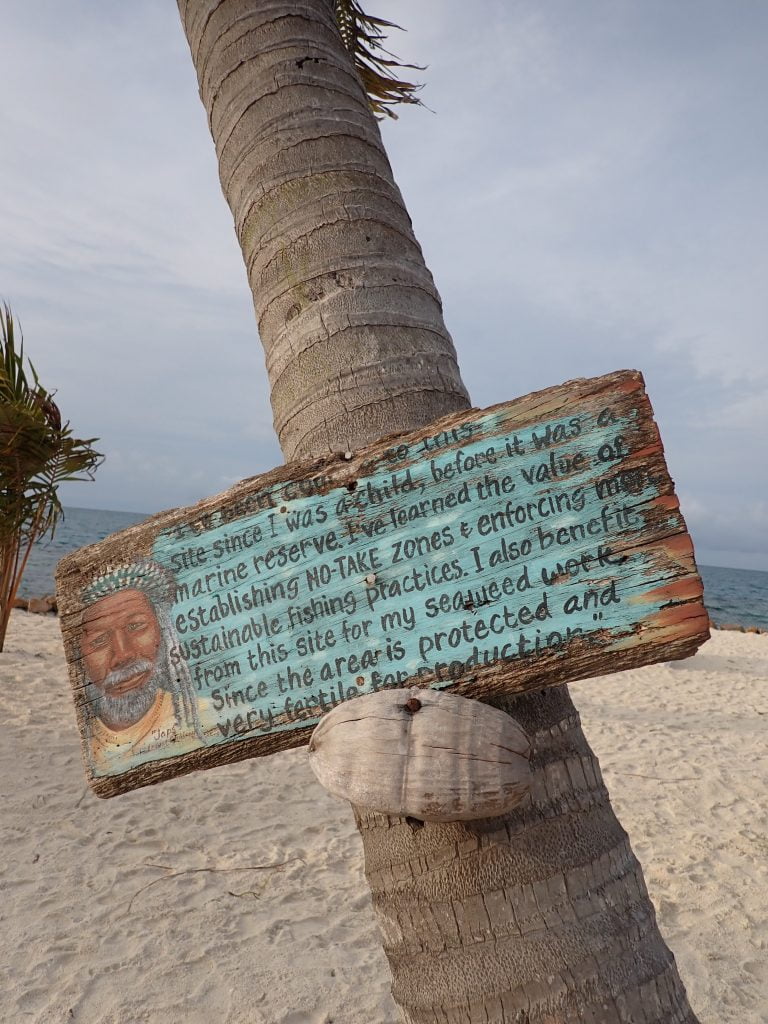
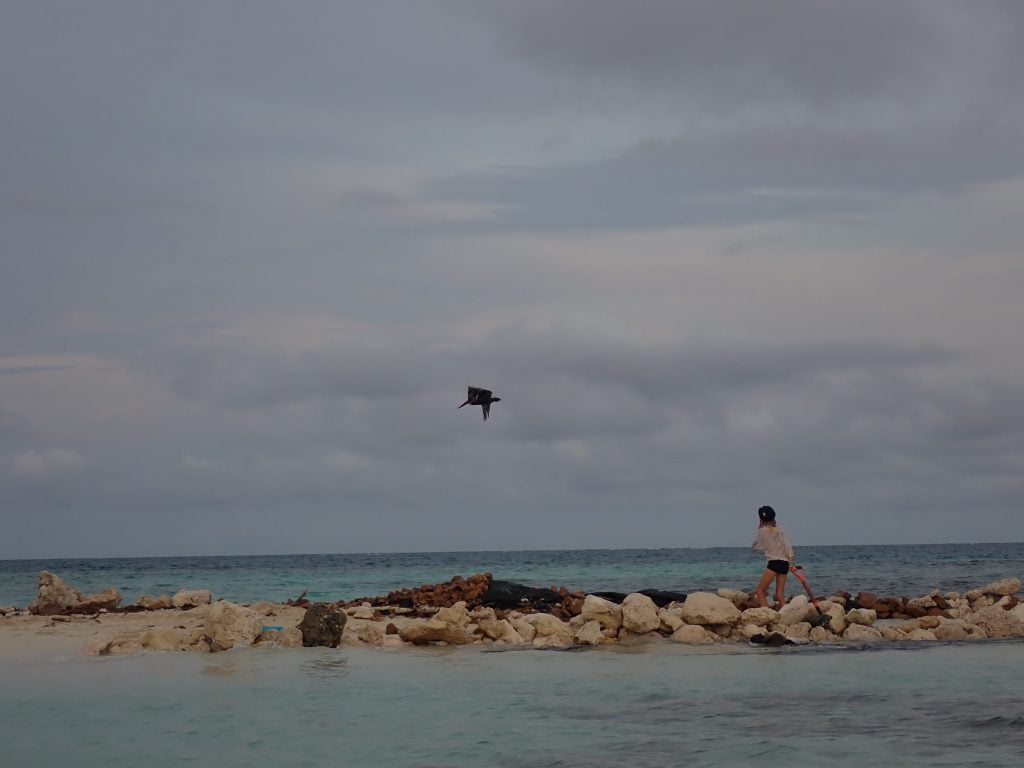
There’s a team of people trying to protect the southern Cay using rubble, a little concrete, palm branches, and some netting. The cays were hit by a hurricane a few years ago, stripping the central cay of all of its vegetation (we couldn’t see any evidence of the palm trees which were once there); the southern cay is also in a precarious state, and erosion is taking its toll. They’ve built a surrounding wall a couple of feet high, which will hopefully be robust enough to stick around and enable the island to catch, rather than lose, sand over time. Some tiny mangrove trees are ready to be planted, too. The boys filled a few bags with rubble, and raked flat the new layers of sand to help, and played with the son of one of the guys doing the work.
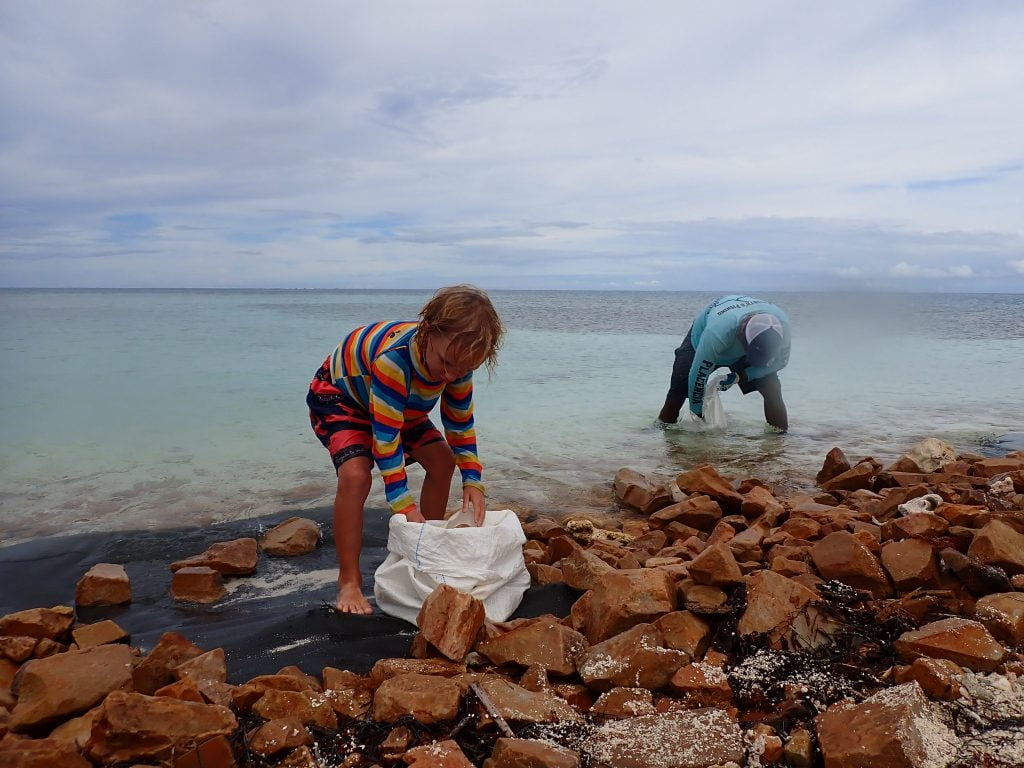
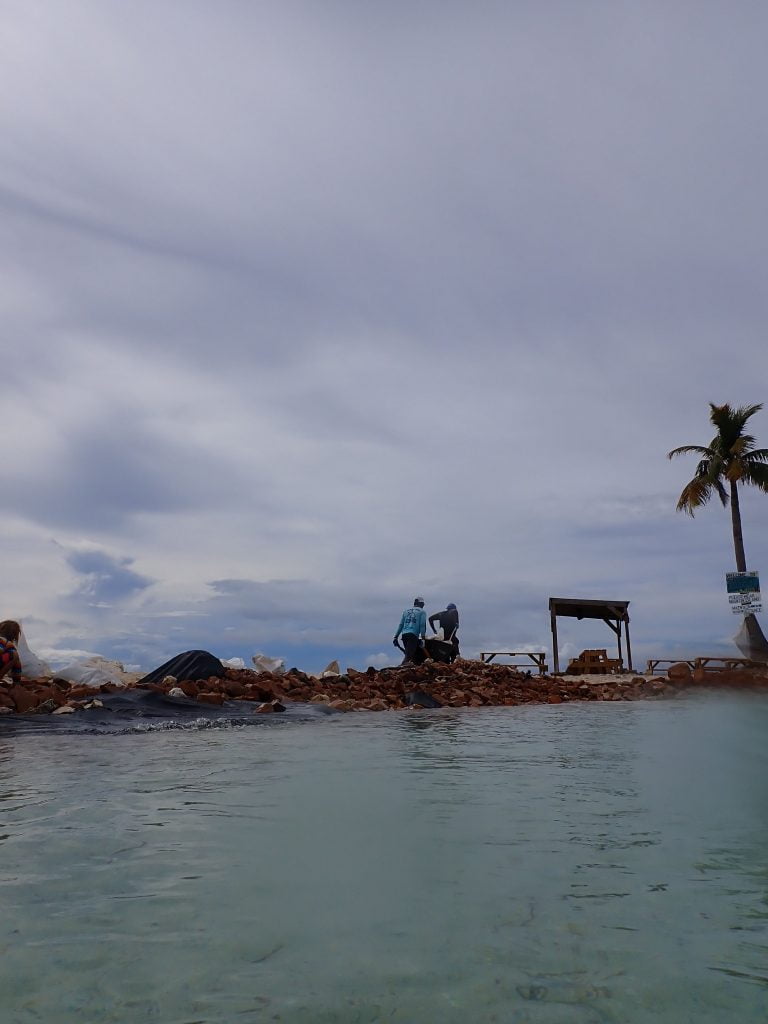
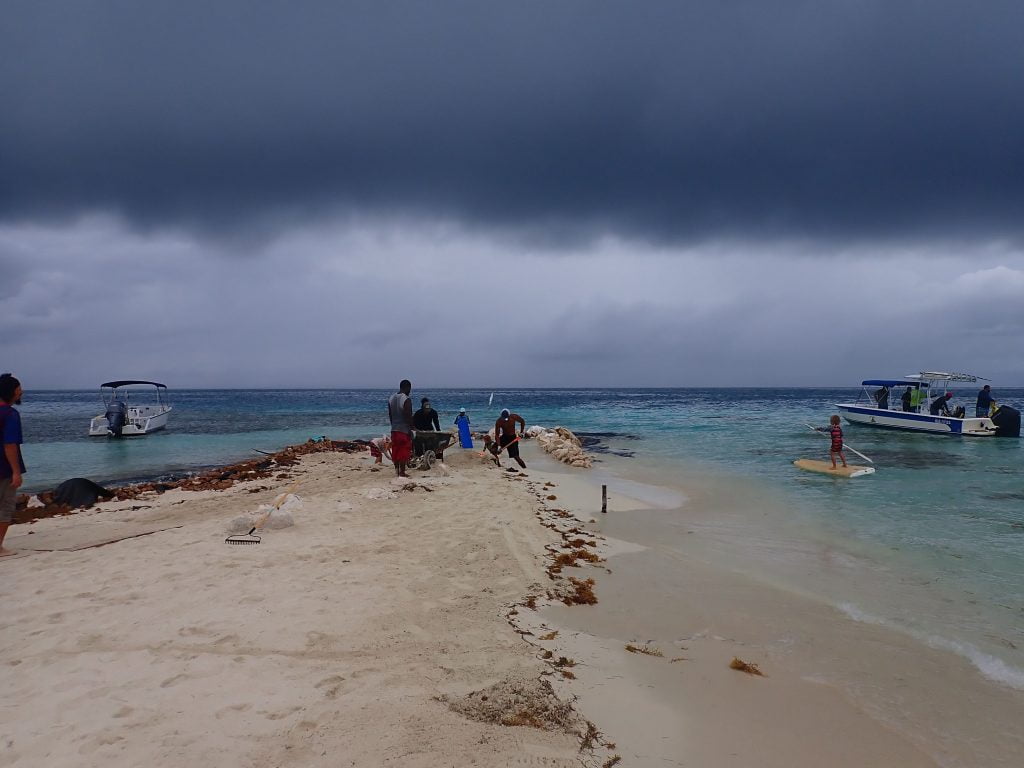
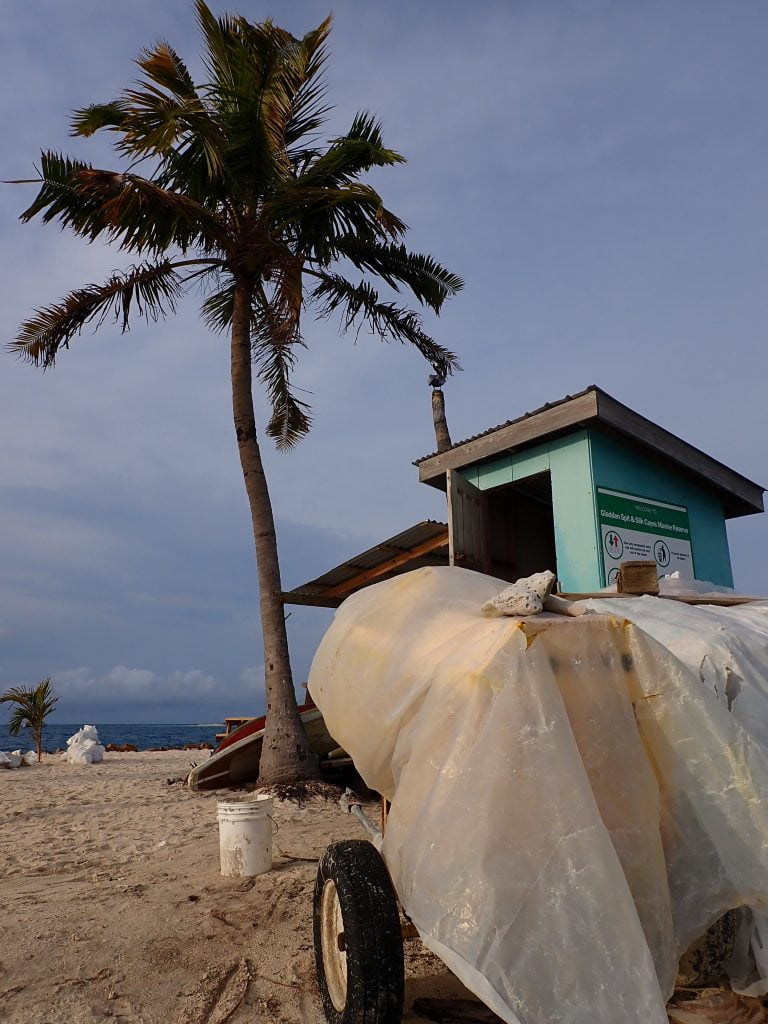
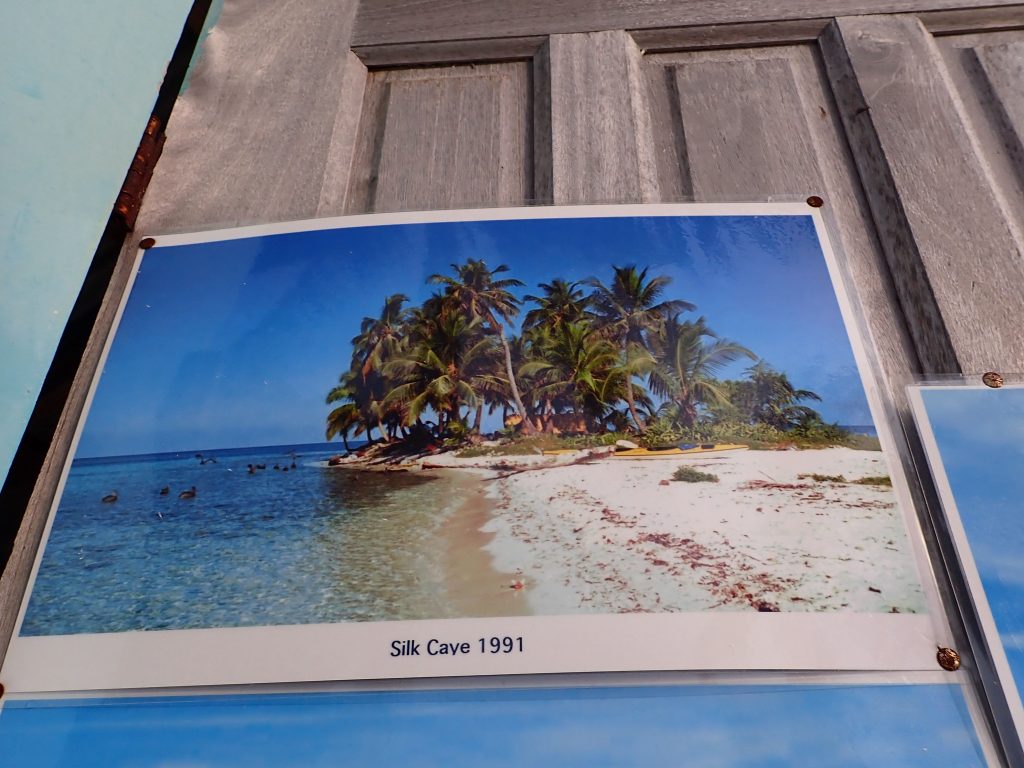
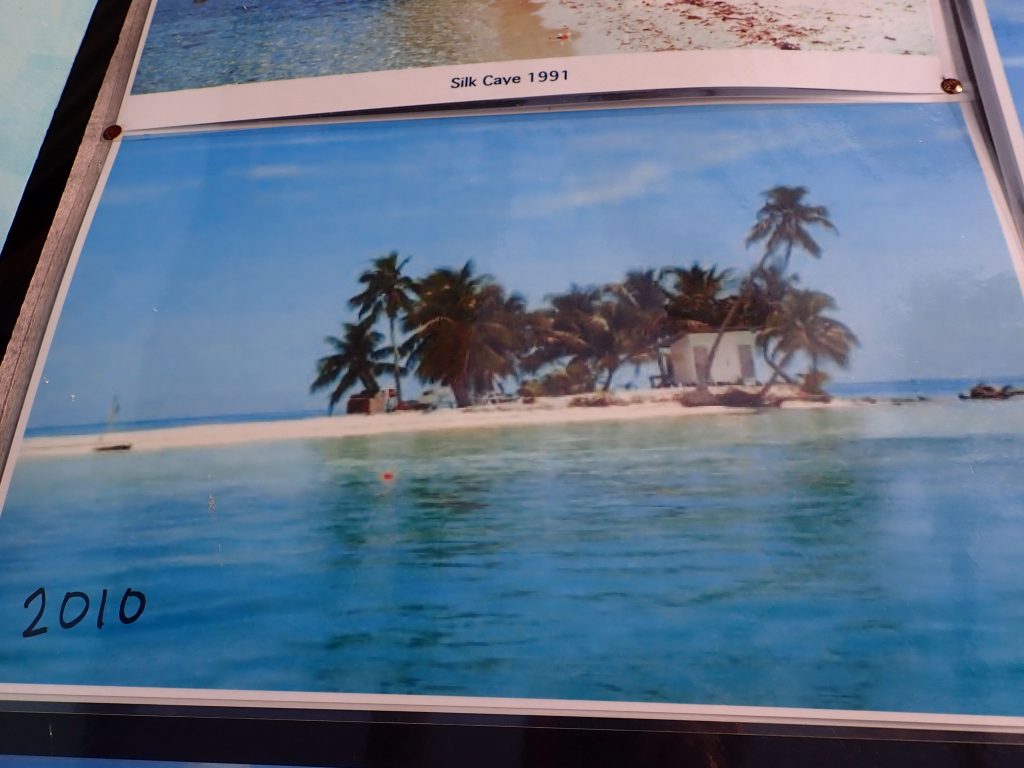
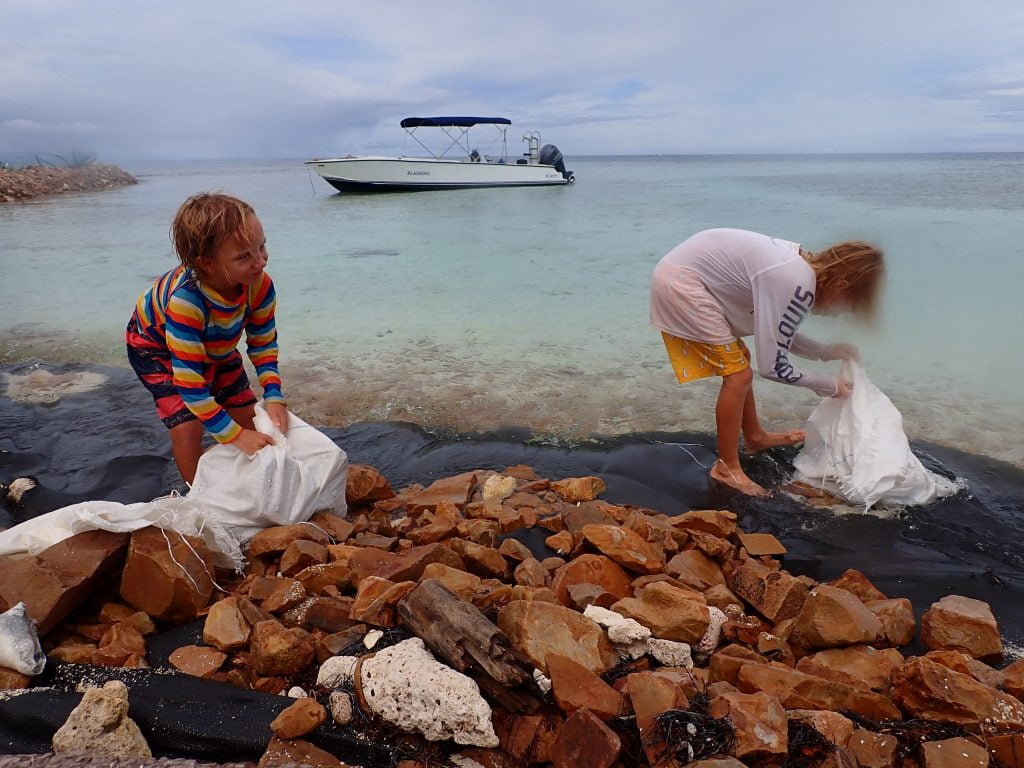

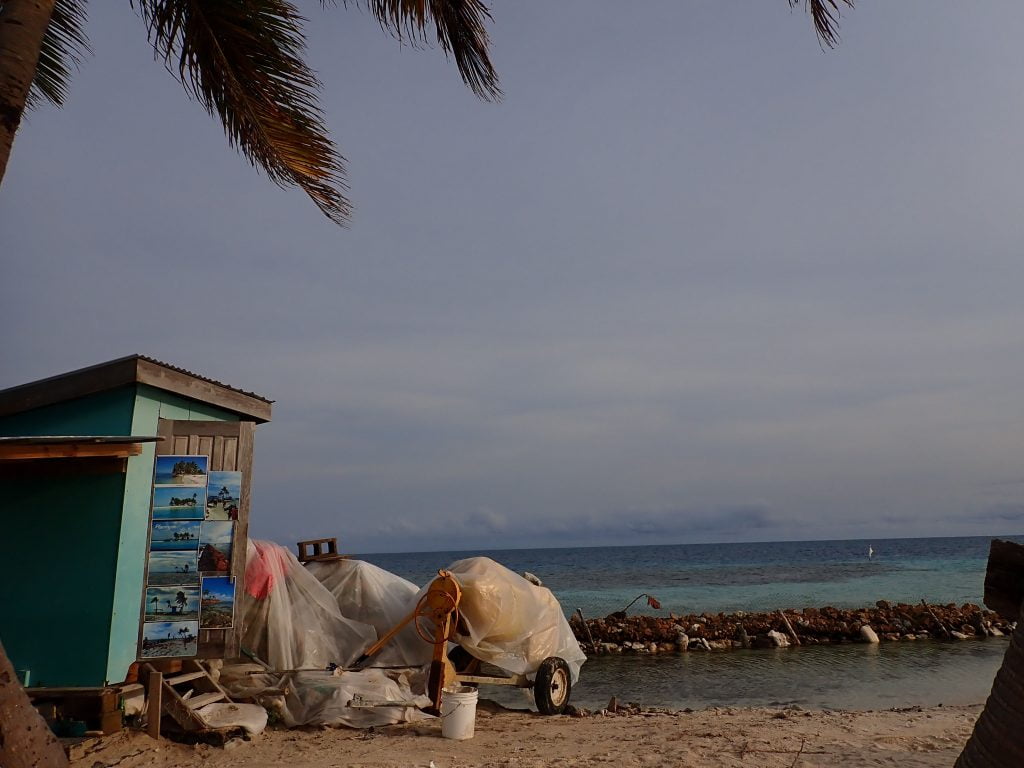

Offshore, the coral surrounding the southern cay is spectacular – a live reef, teeming with coral and fish. Thankfully, this is where my long-covid hobbled energy levels decided to coincide productively with a visit to a reef, and I even got to snorkel myself –the second substantive time in the water for me since we hit Belize. Among other things I saw close-up: a 3’ long permit fish, a 5’ stingray, 6’ nurse shark, shrimp cleaning bigger fish, wonderful coral, a school of hundreds of blue tang, innumerable smaller fish, and plenty of species we’ve not seen elsewhere.
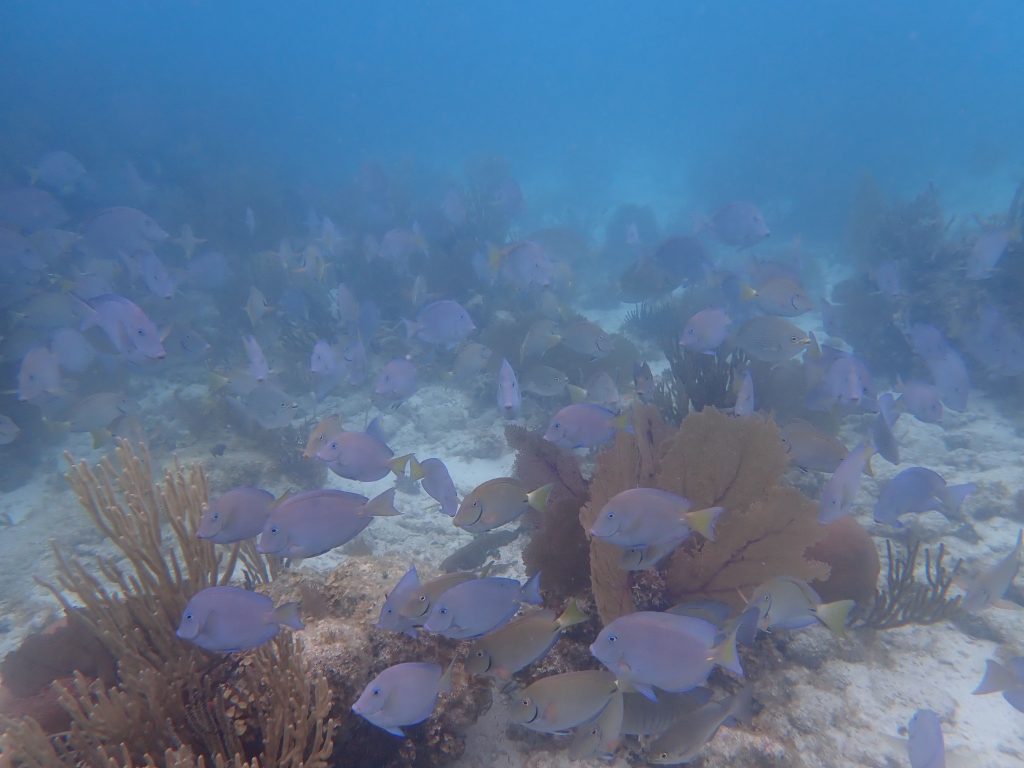



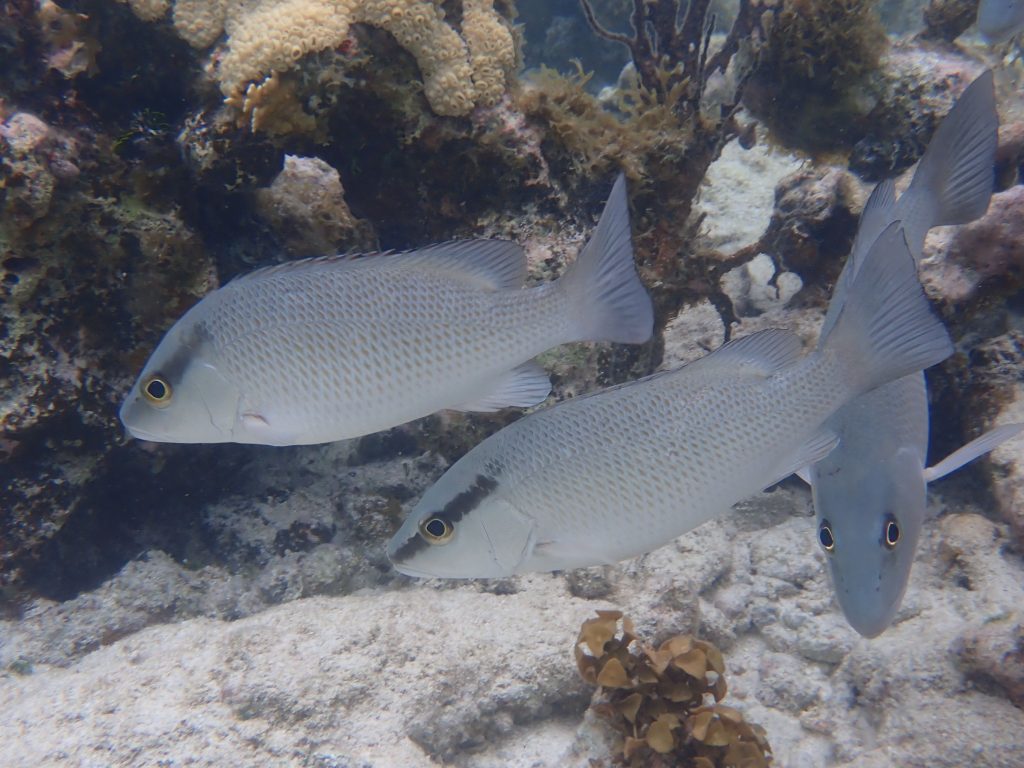

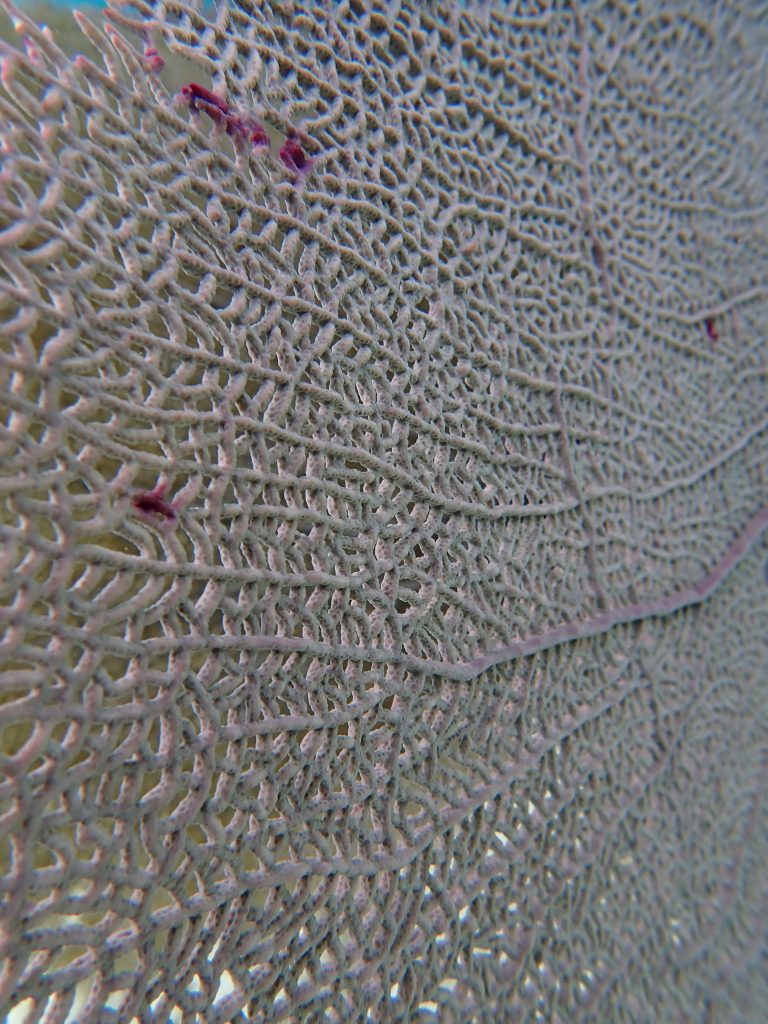
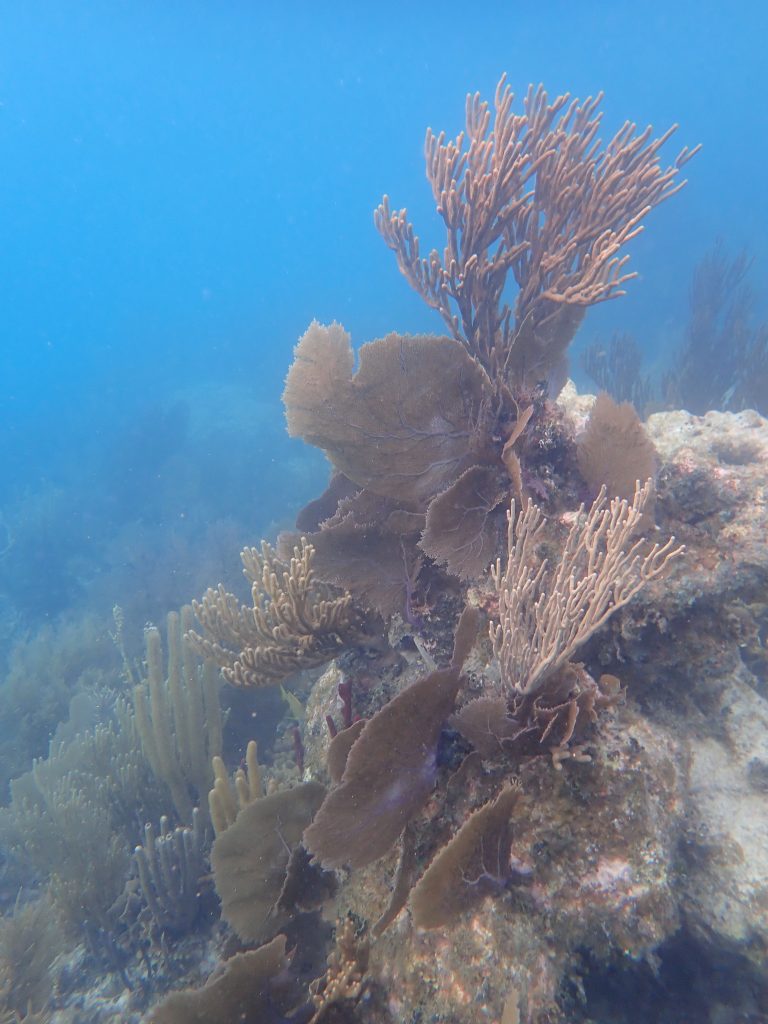
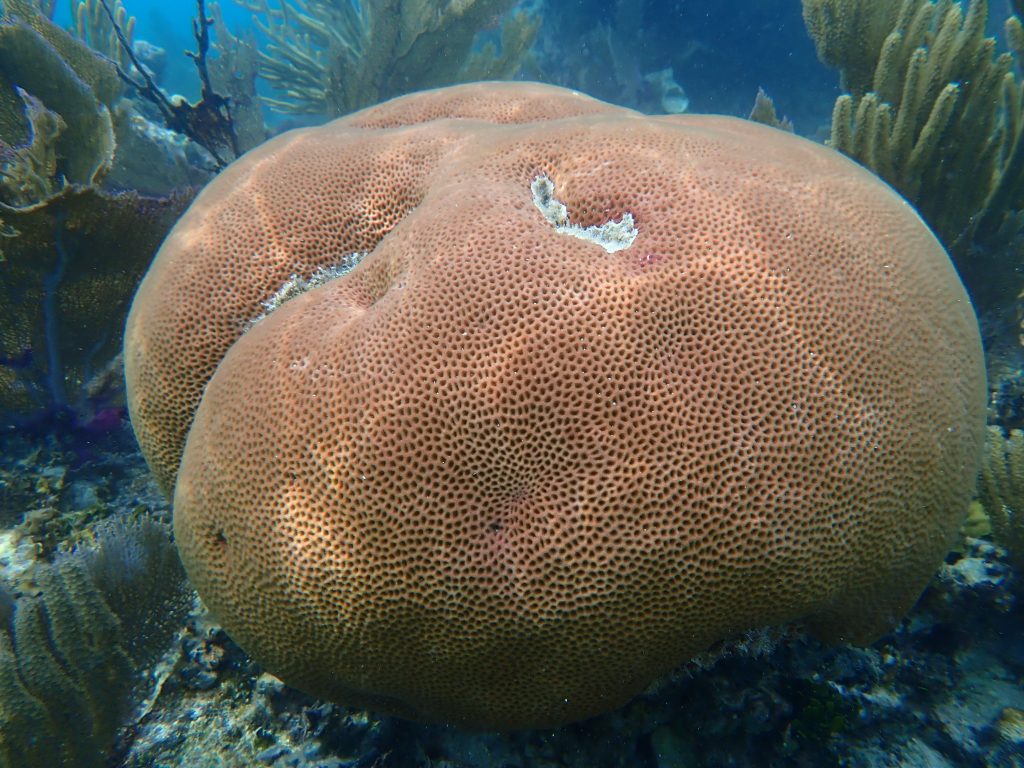

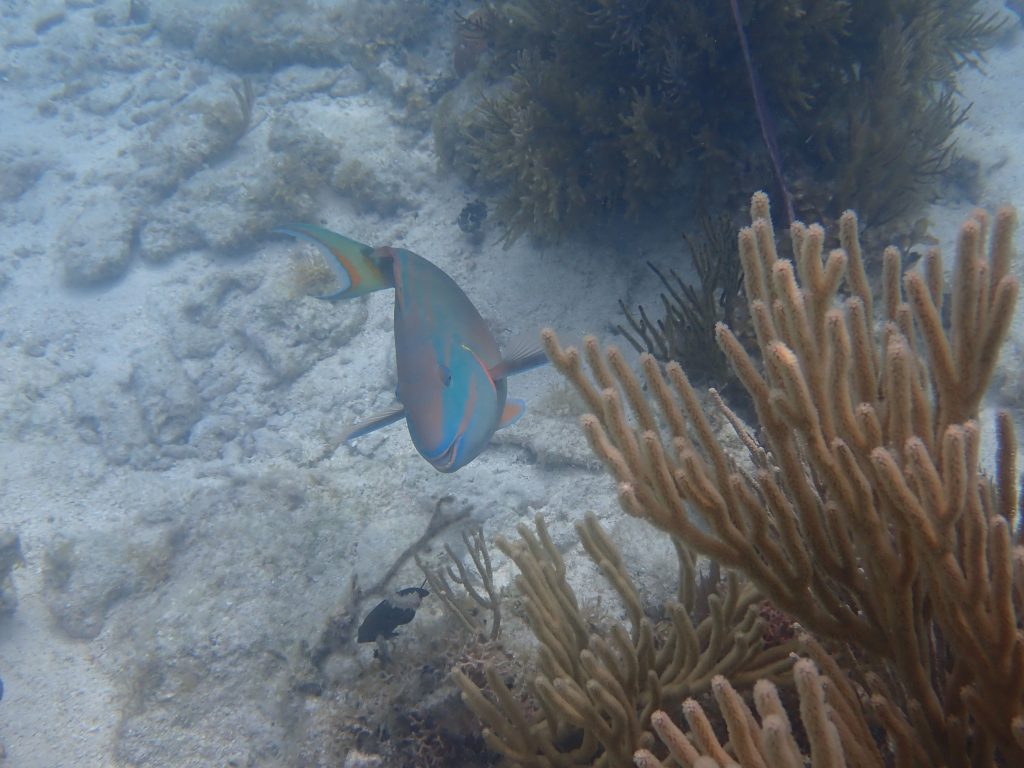
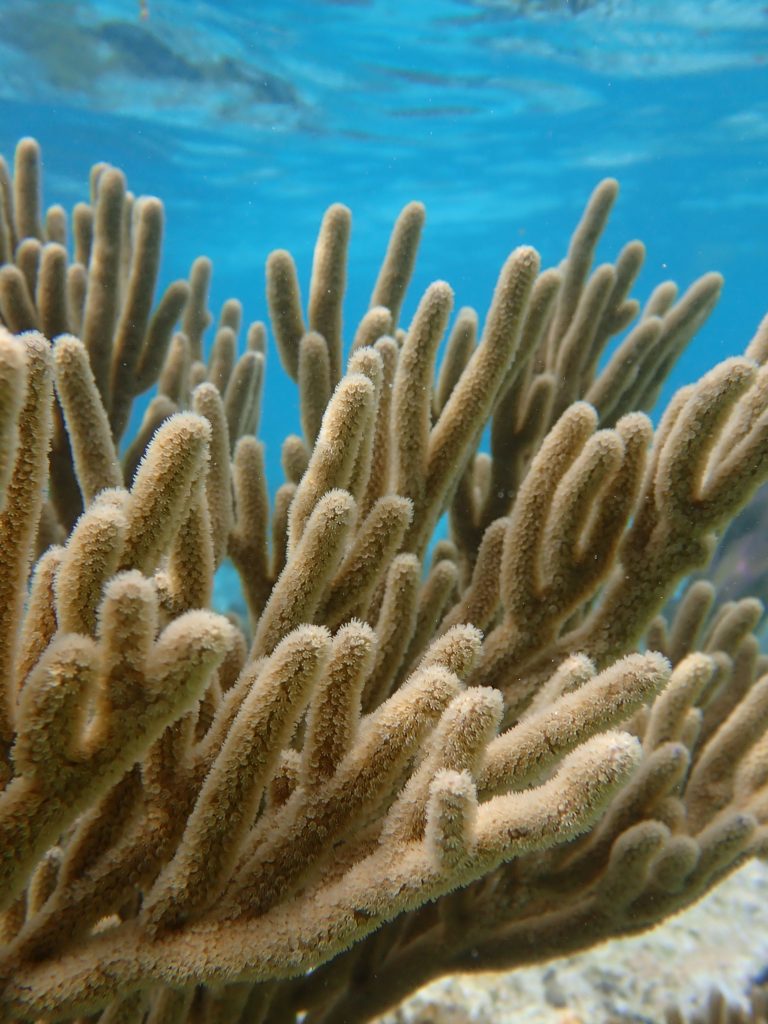
A highlight was seeing a beautiful nurse shark feeding, thrashing about in the sand and coral, producing clouds of dust into the water around it. It was joined by a huge permit, perhaps seeking to help itself to anything the shark disturbed.
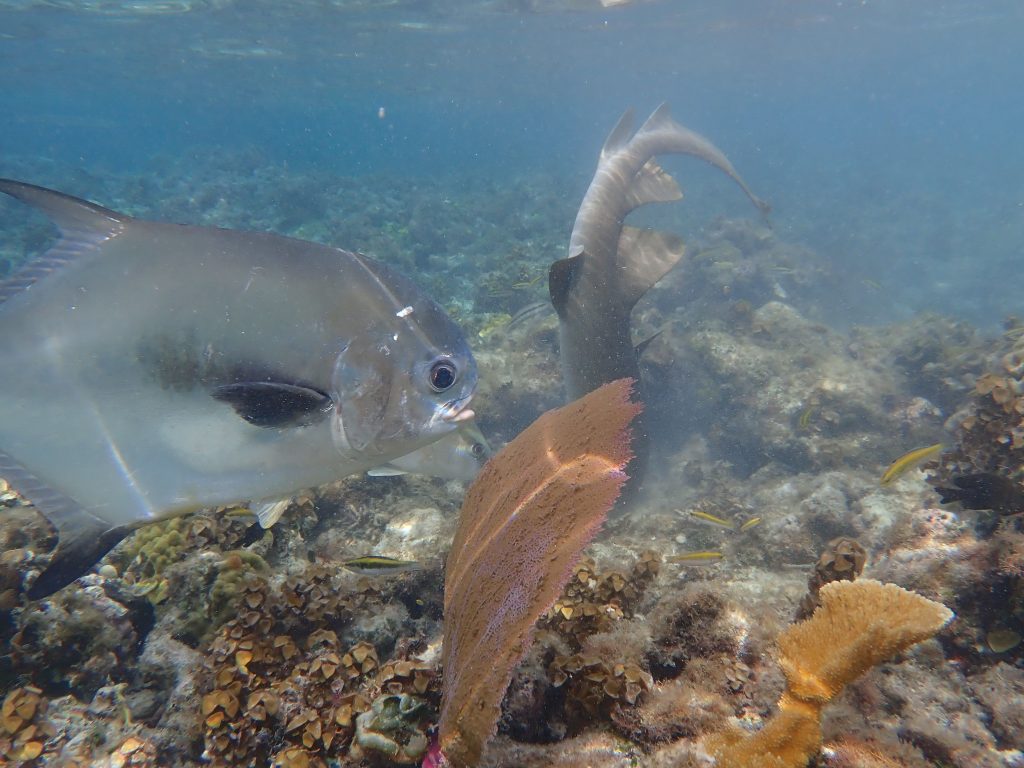
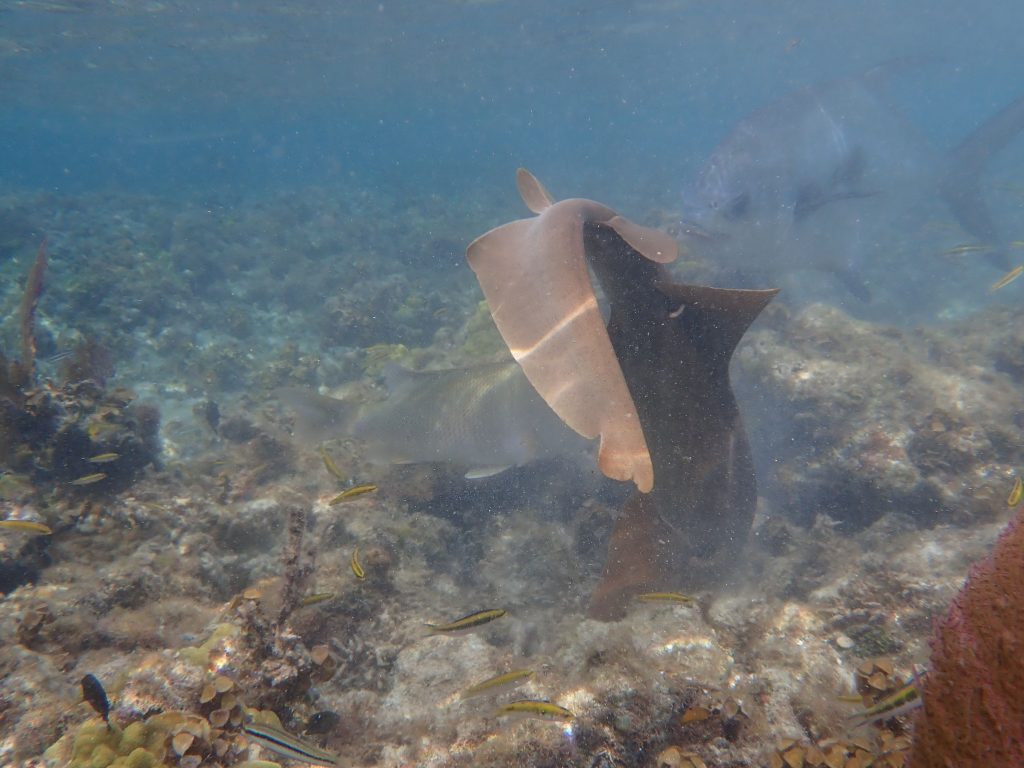

The coral in the shallows around the central cay was damaged by the hurricane that raged through the area, but there’s plenty to look at a little further out. We’d like to snorkel the perimeter of the drop off here if we revisit. We saw a guide take a couple this route, just as a small pod of dolphins were feeding on the drop off. The dolphins returned the next day as we were leaving, so perhaps this is a regualr feeding area?
We were intending to take either the dinghy or the boat a mile further towards the reef, to an area the tour groups go snorkeling with turtles. Or, if the commercial fishing vessels are gutting their catch that day, to watch the sharks (and not snorkel). But conducive weather and the kid’s moods didn’t coincide on this visit. No matter, we’ll return here.
We are considering re-connecting the Iridium Go, just for the next month, so we can get up to date weather forecasts and stay out of internet-land for more than 3 days at a time. I need a day or two each week for client calls and downloading things to work on through the rest of the week; but aside from that there’s no pressure for connection. And its nice out here.
